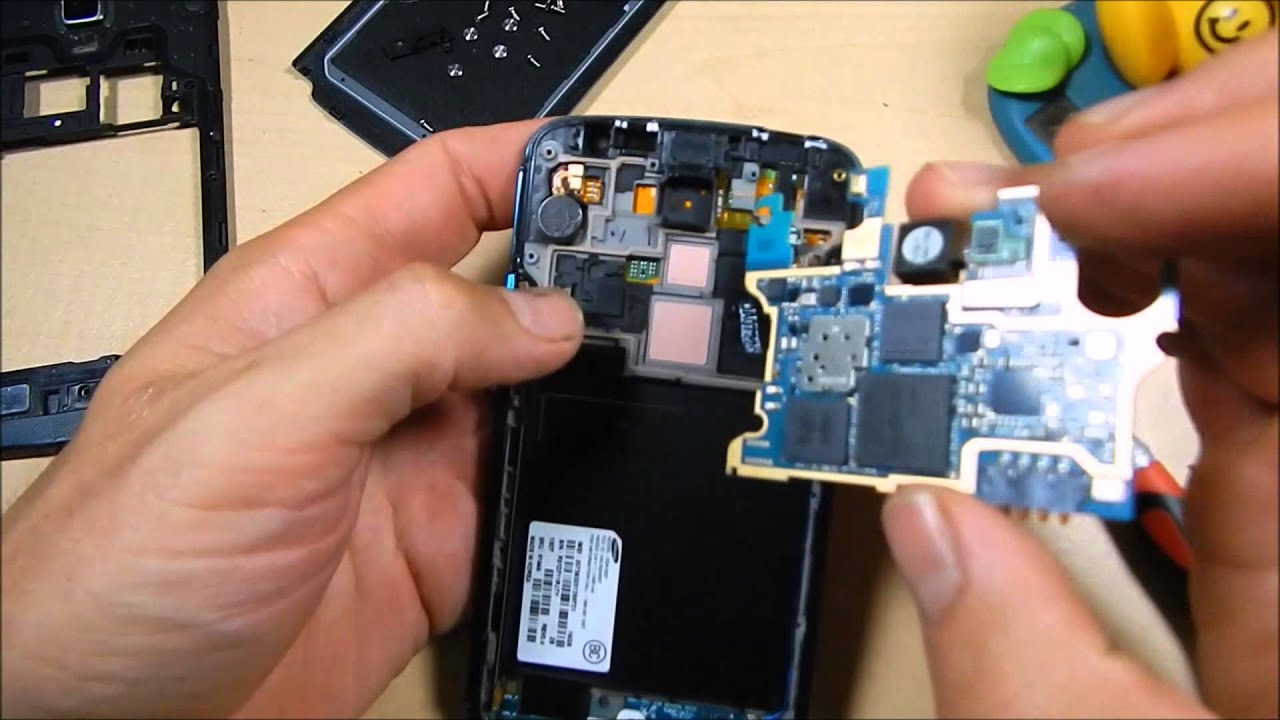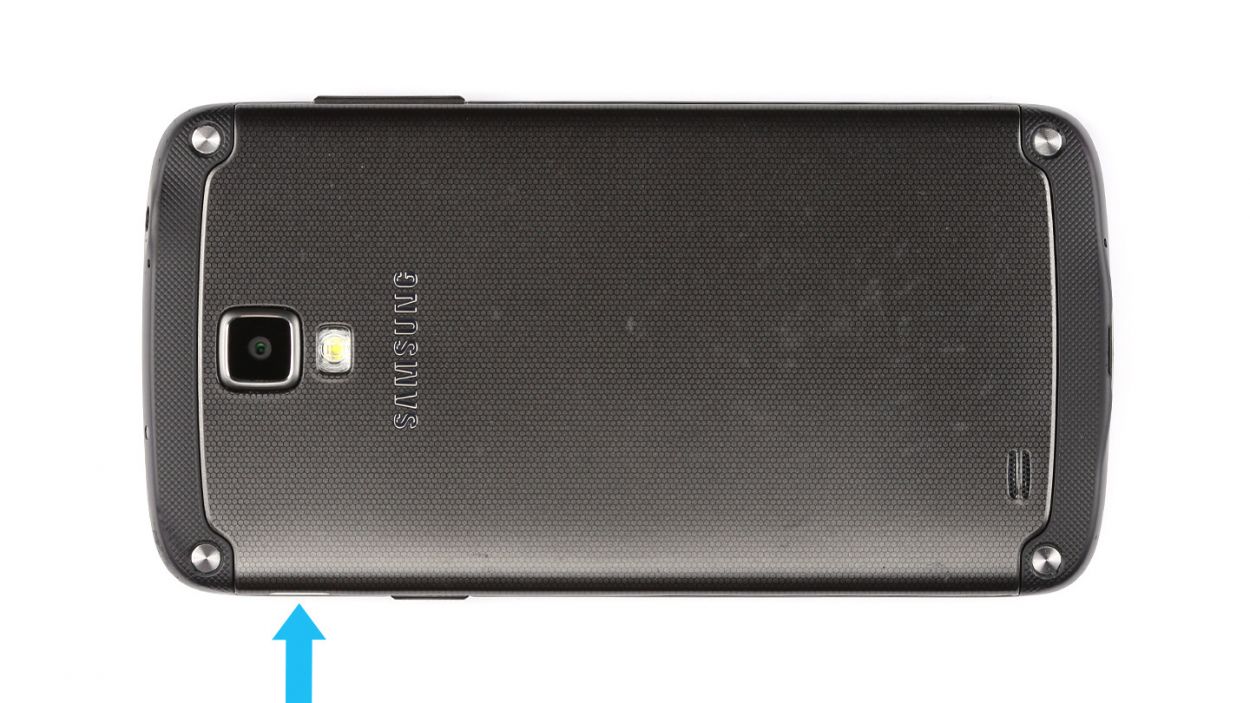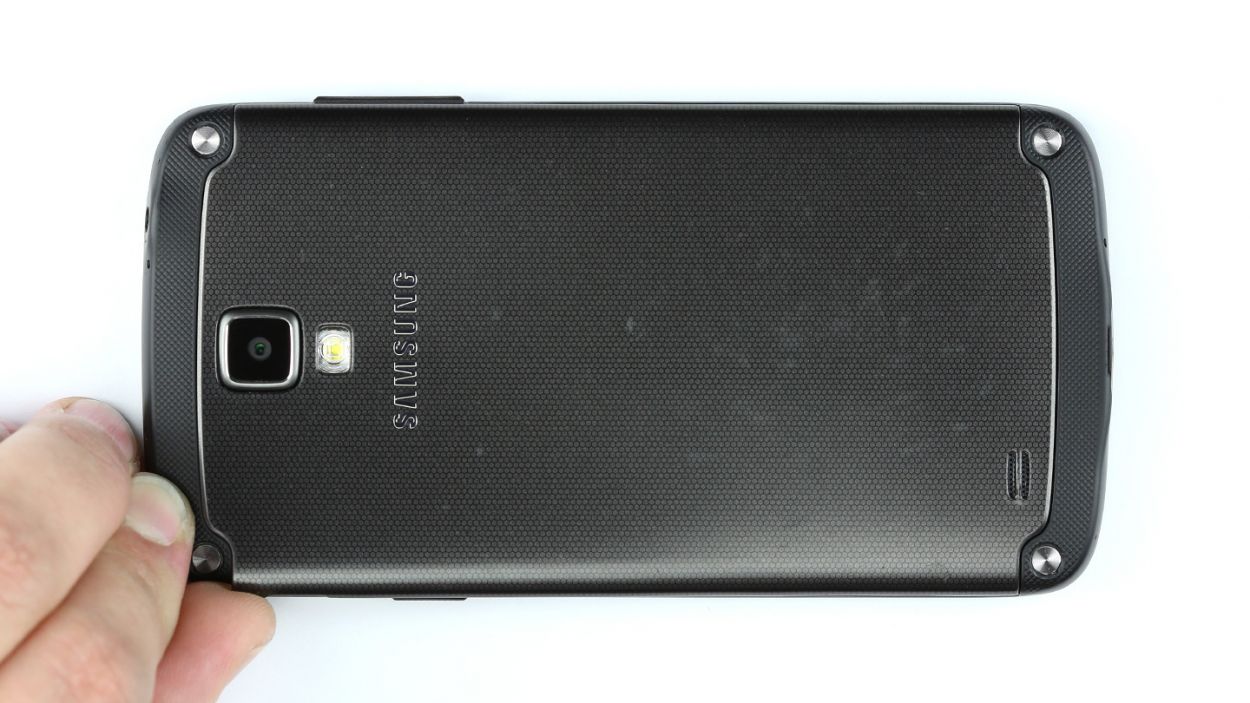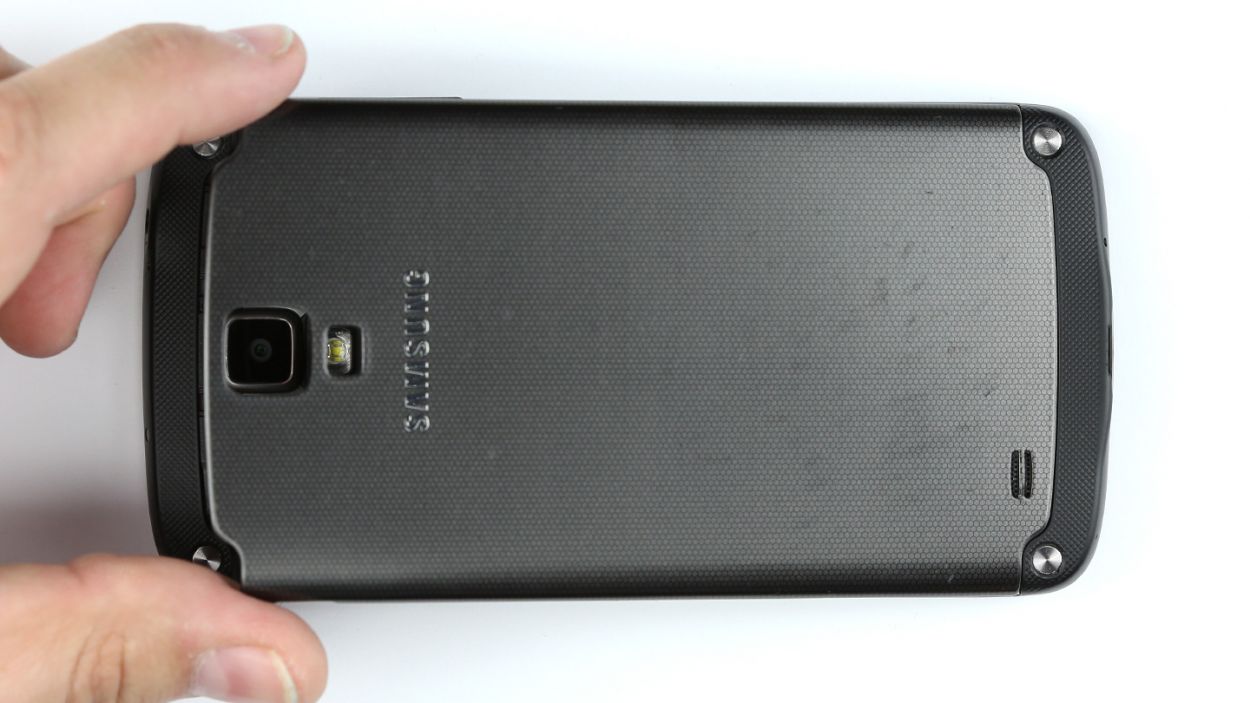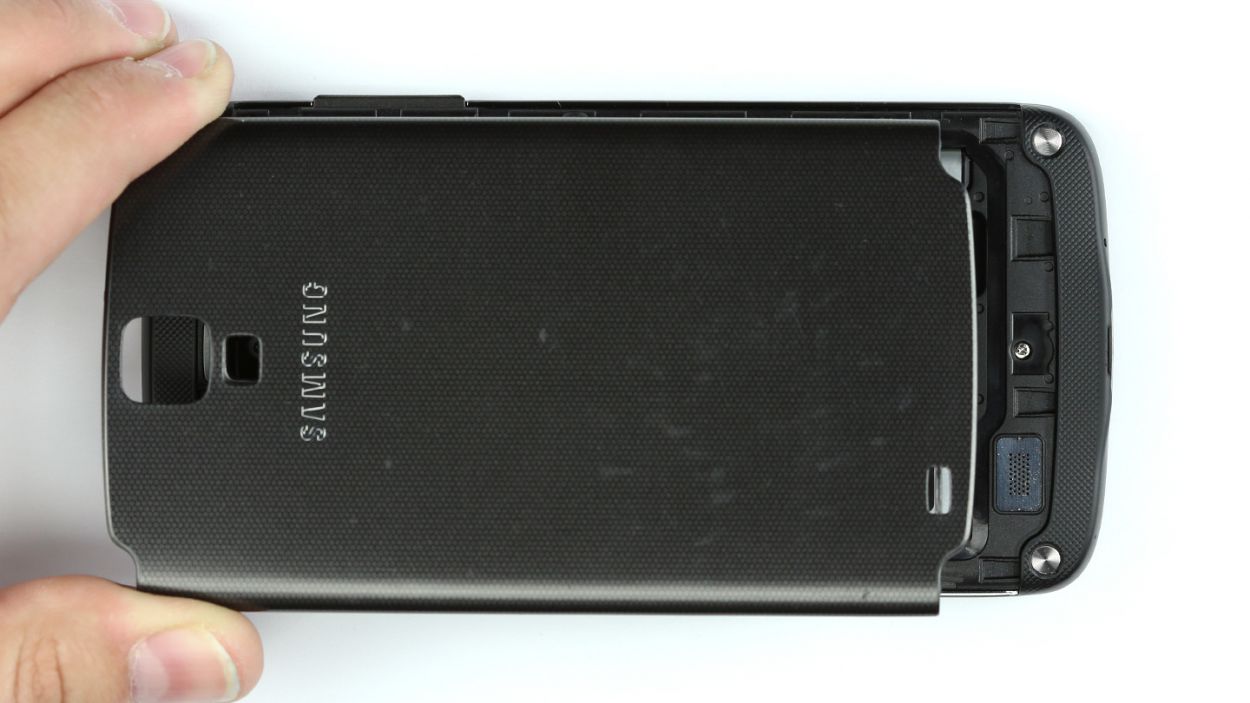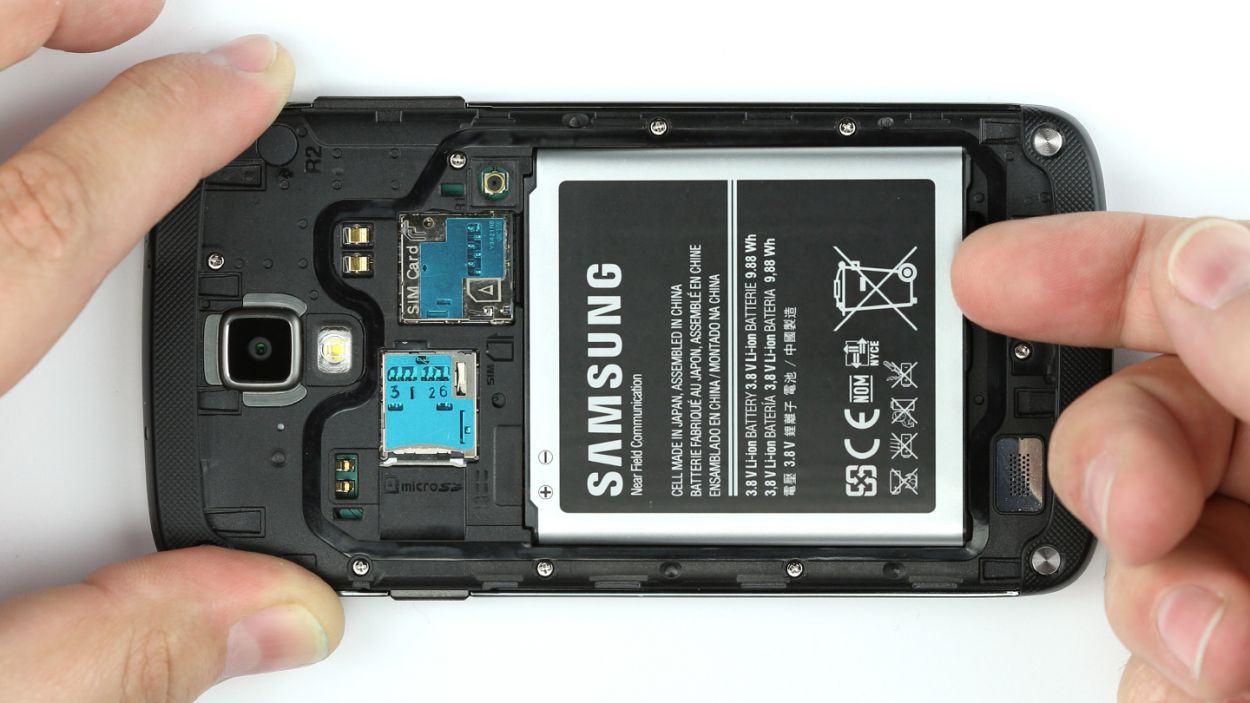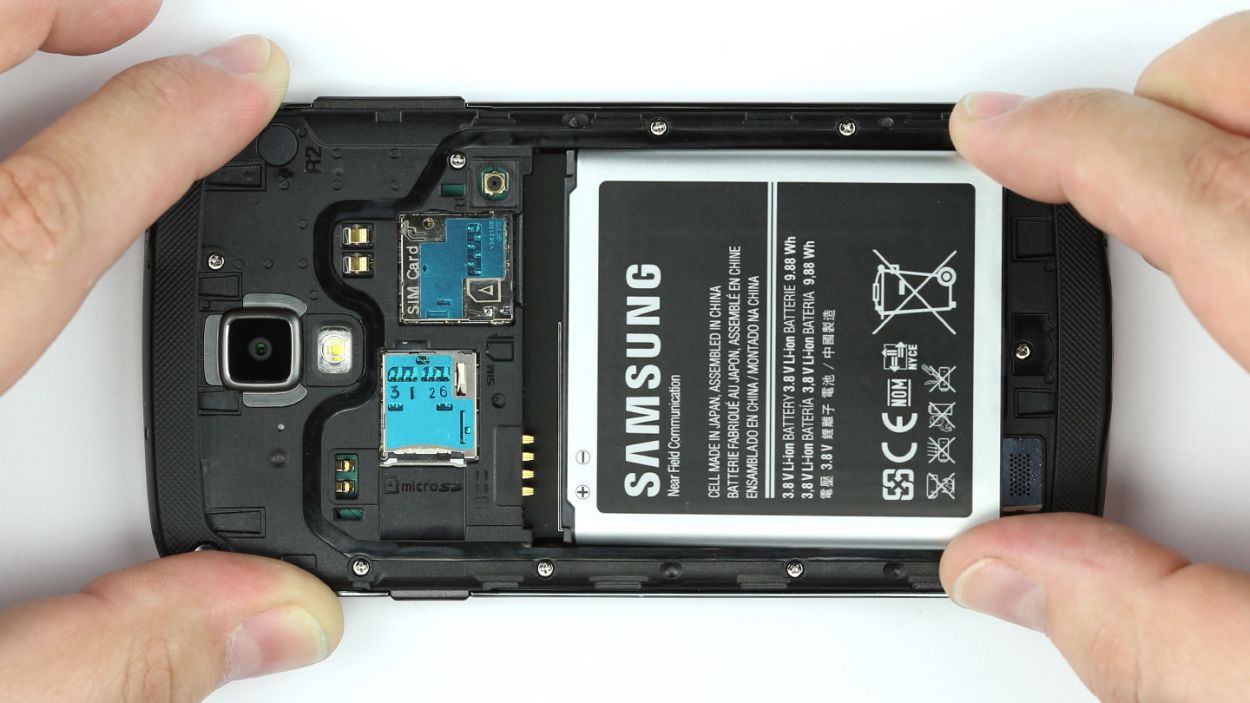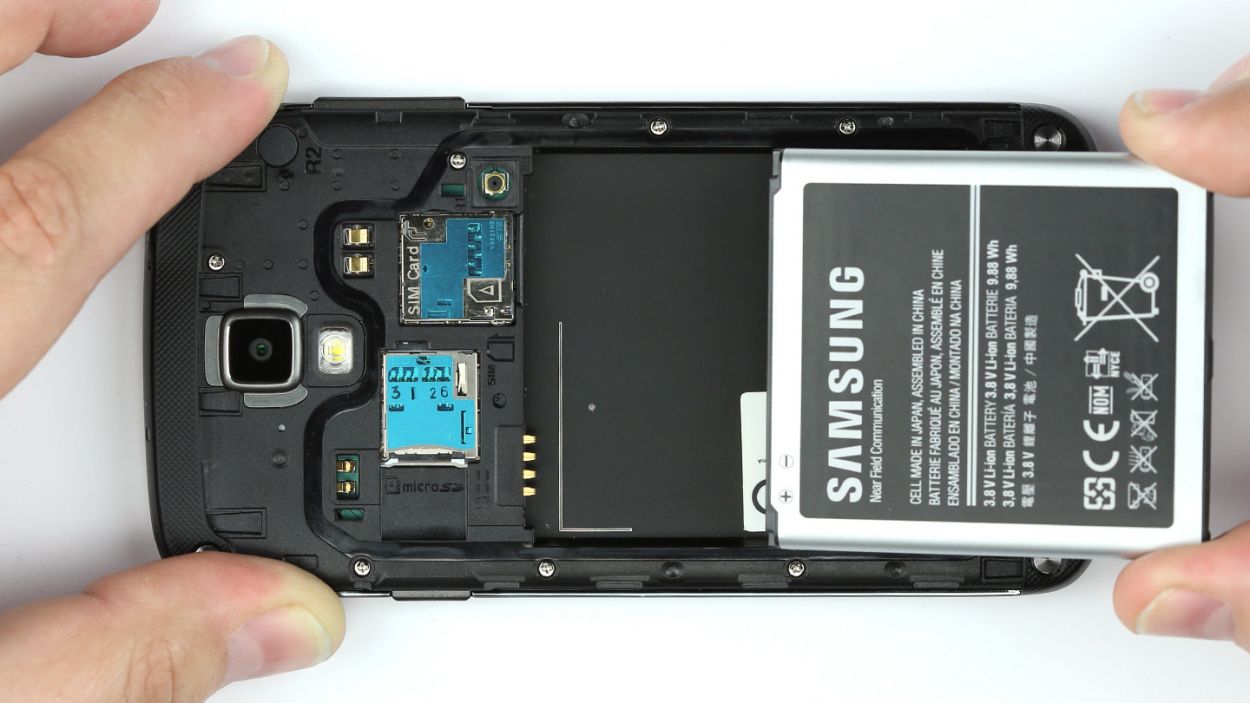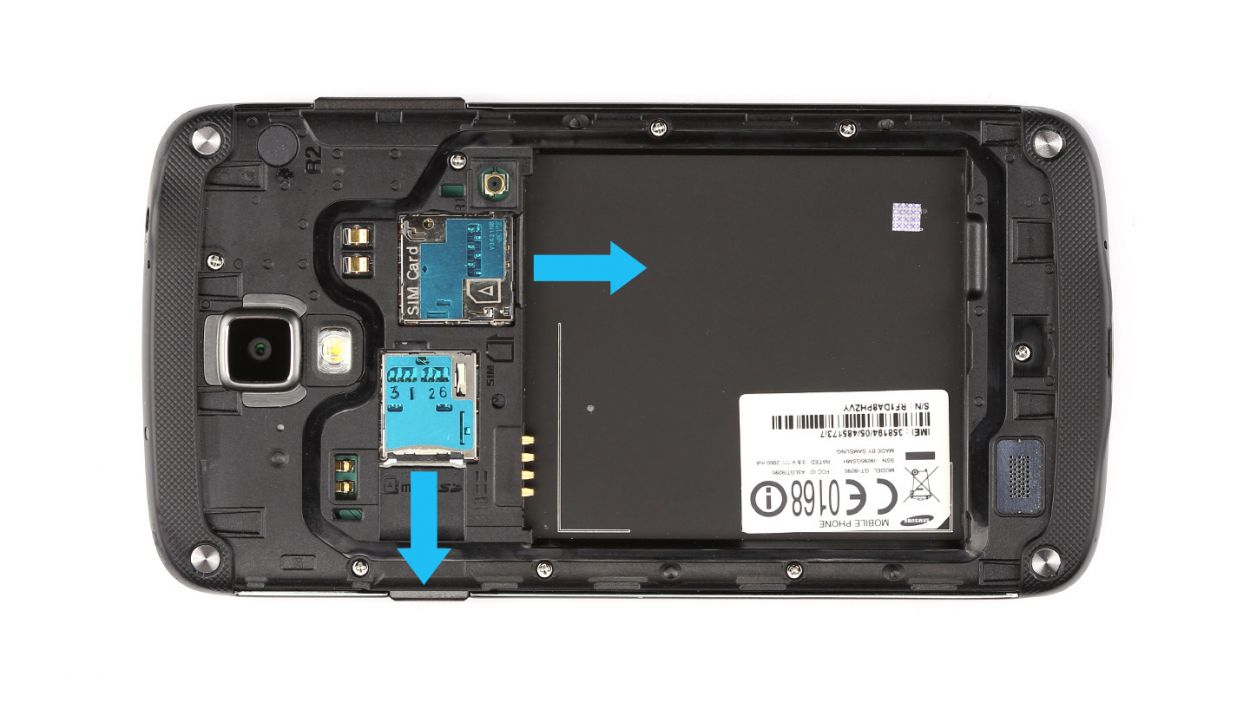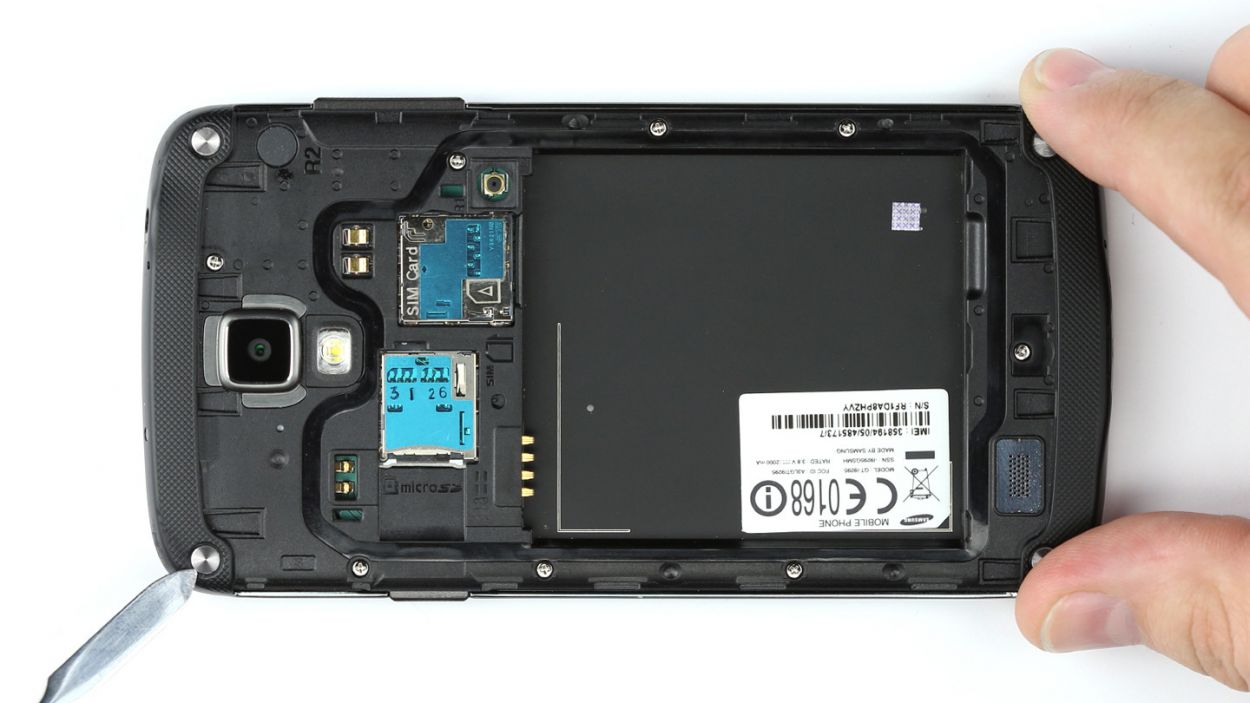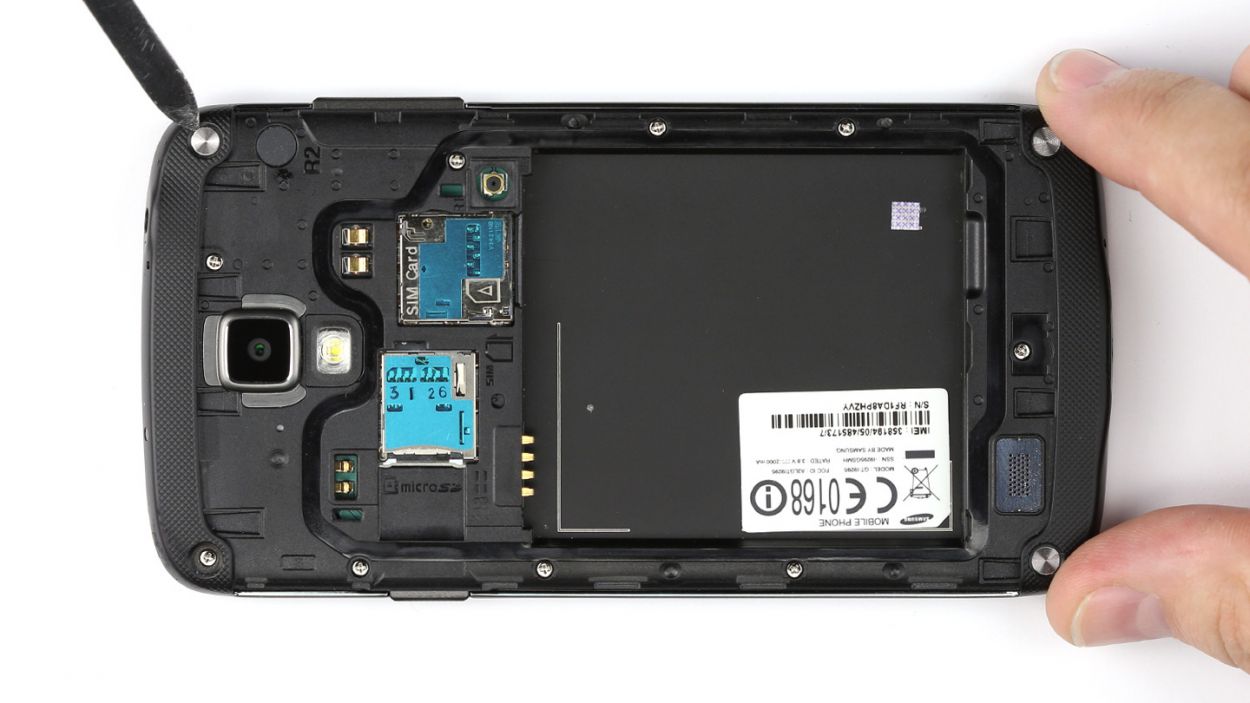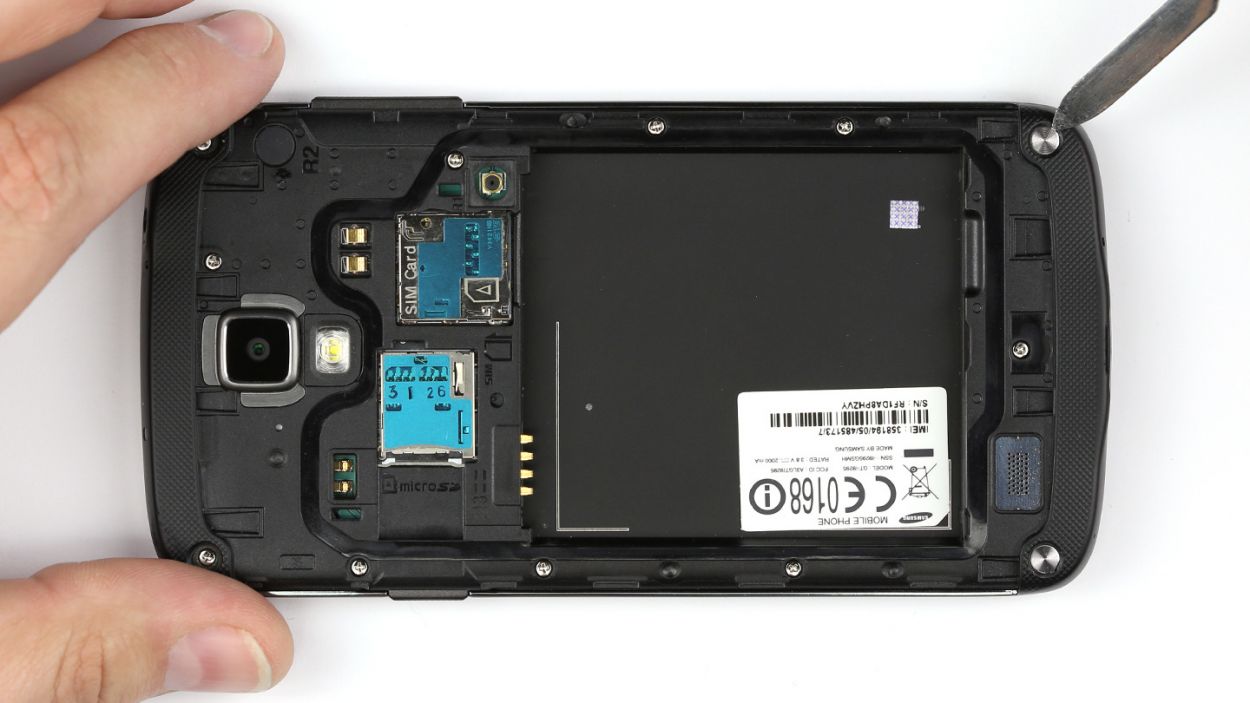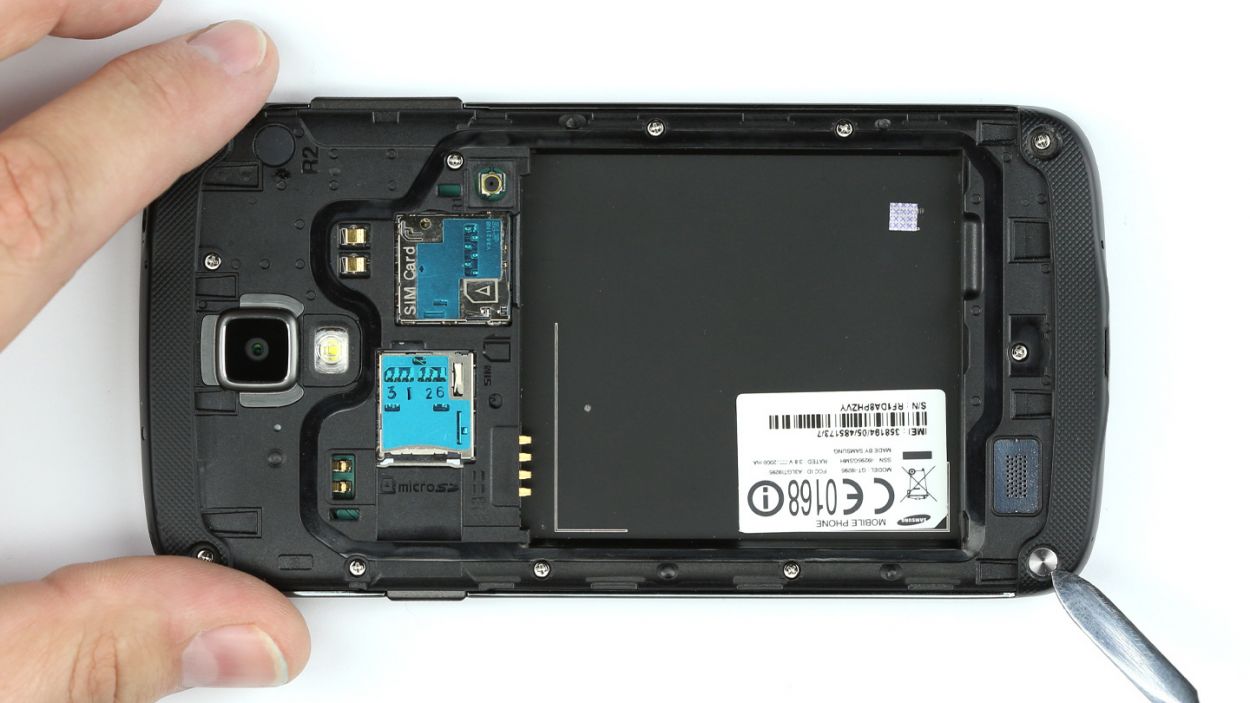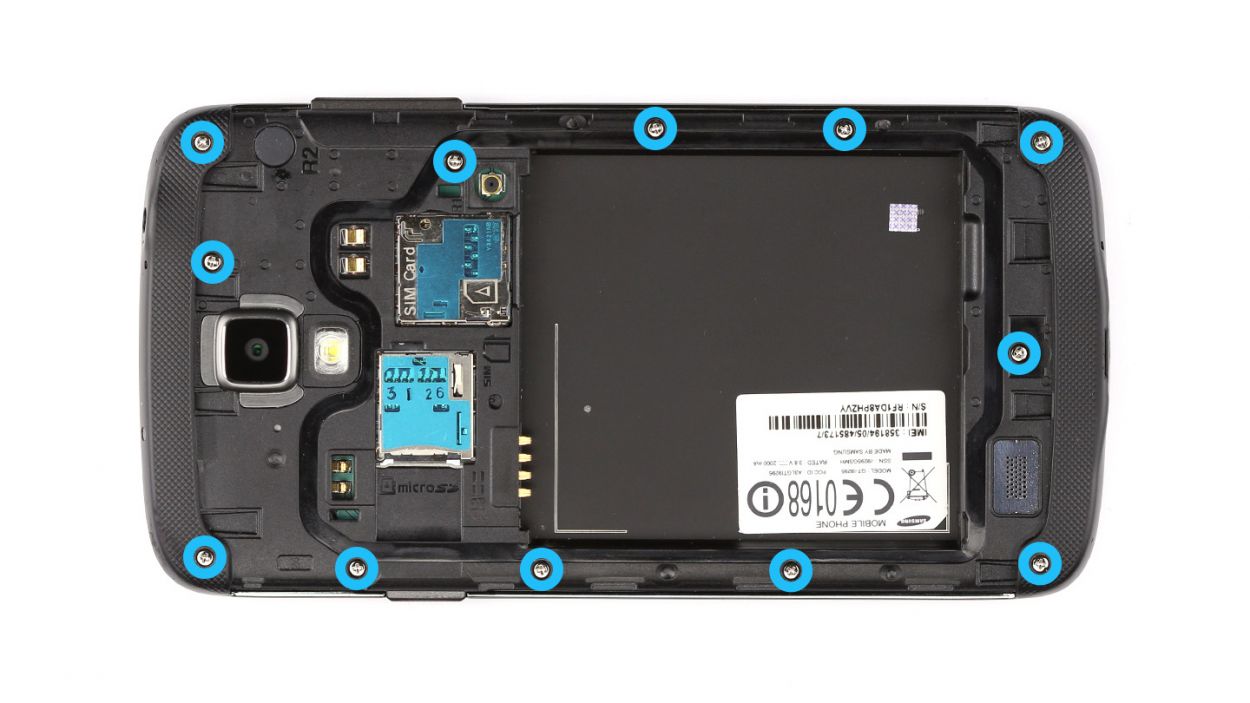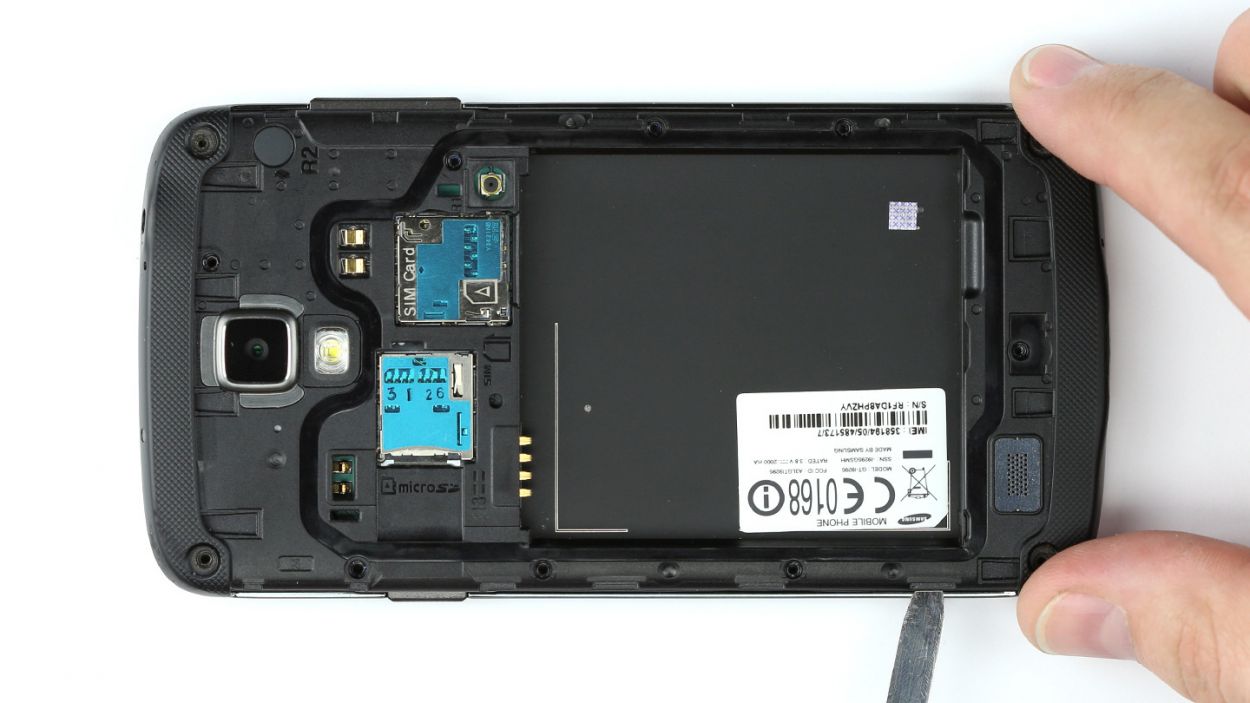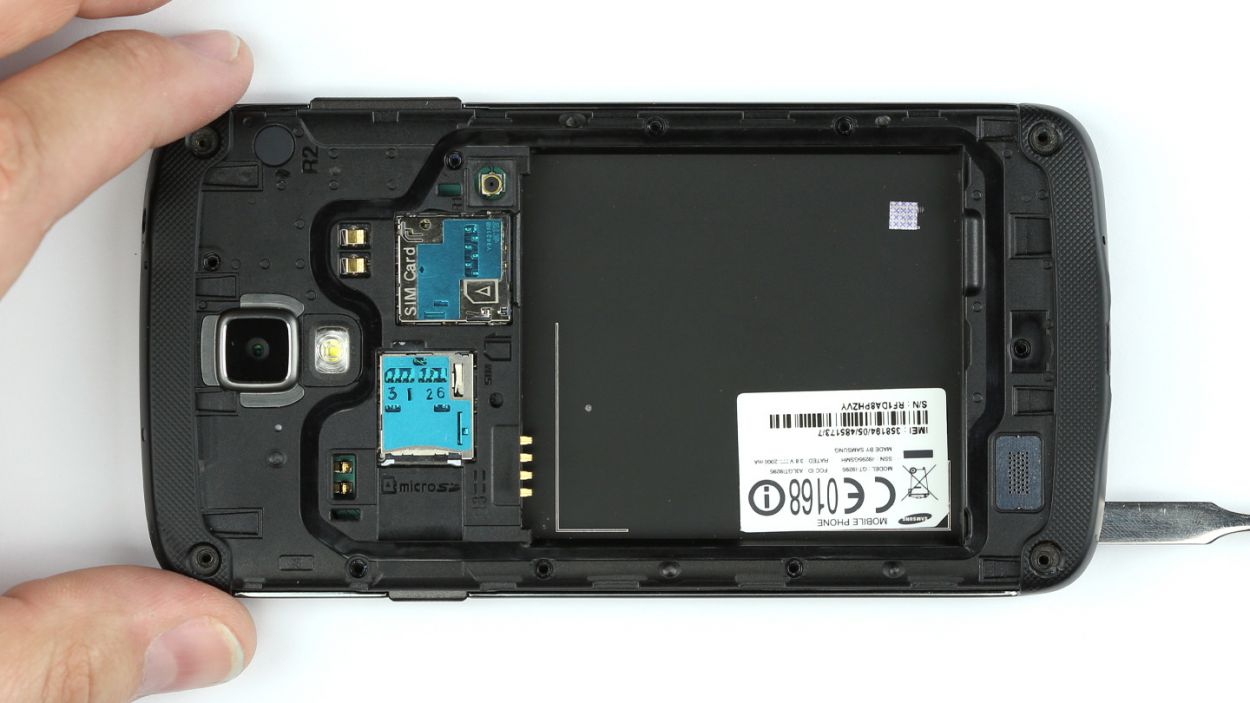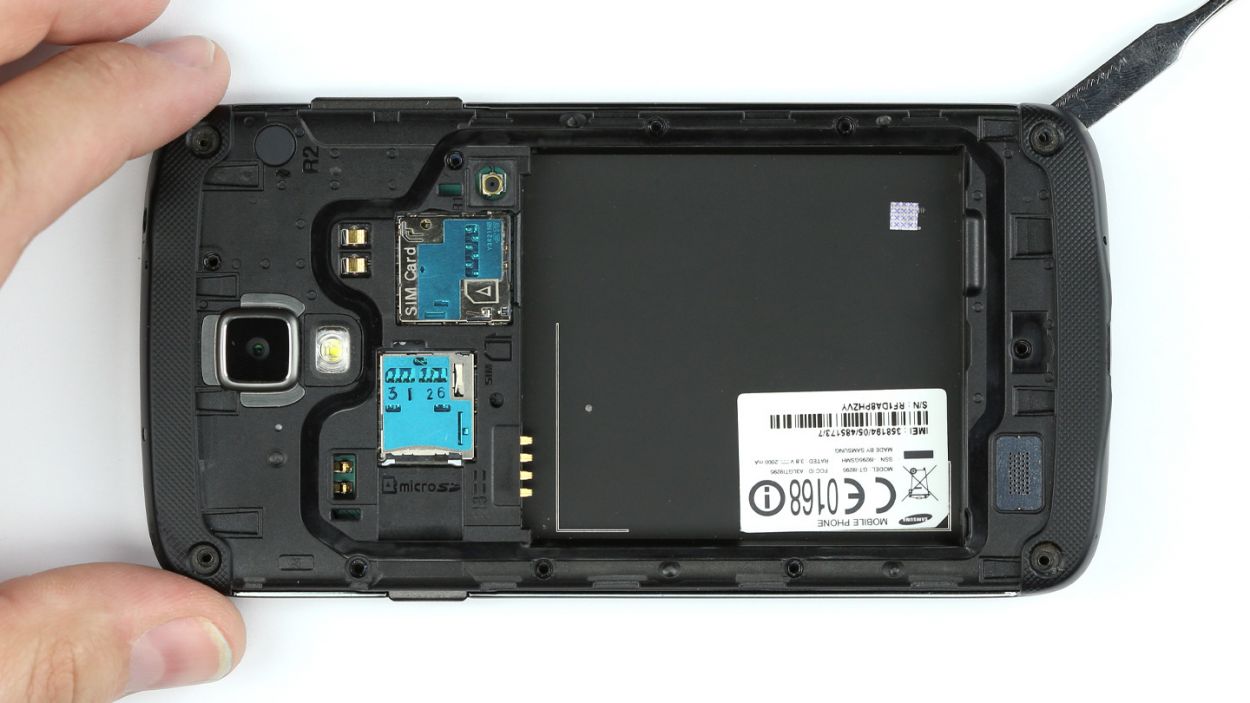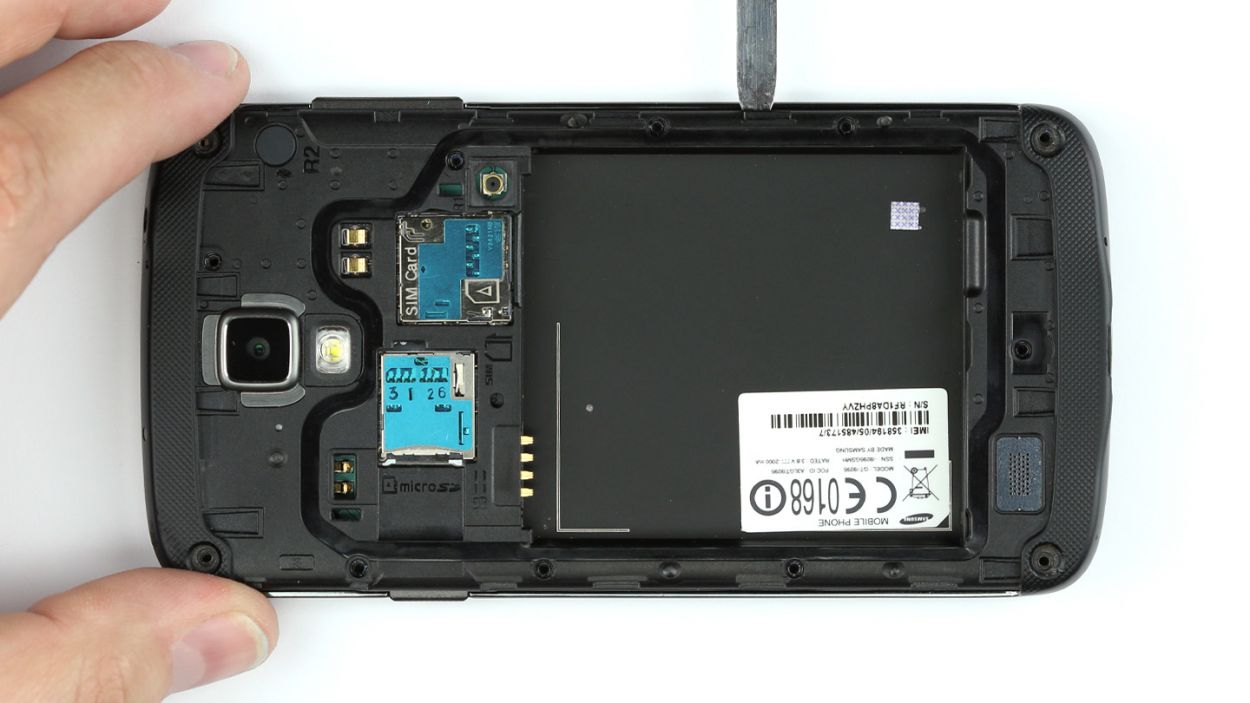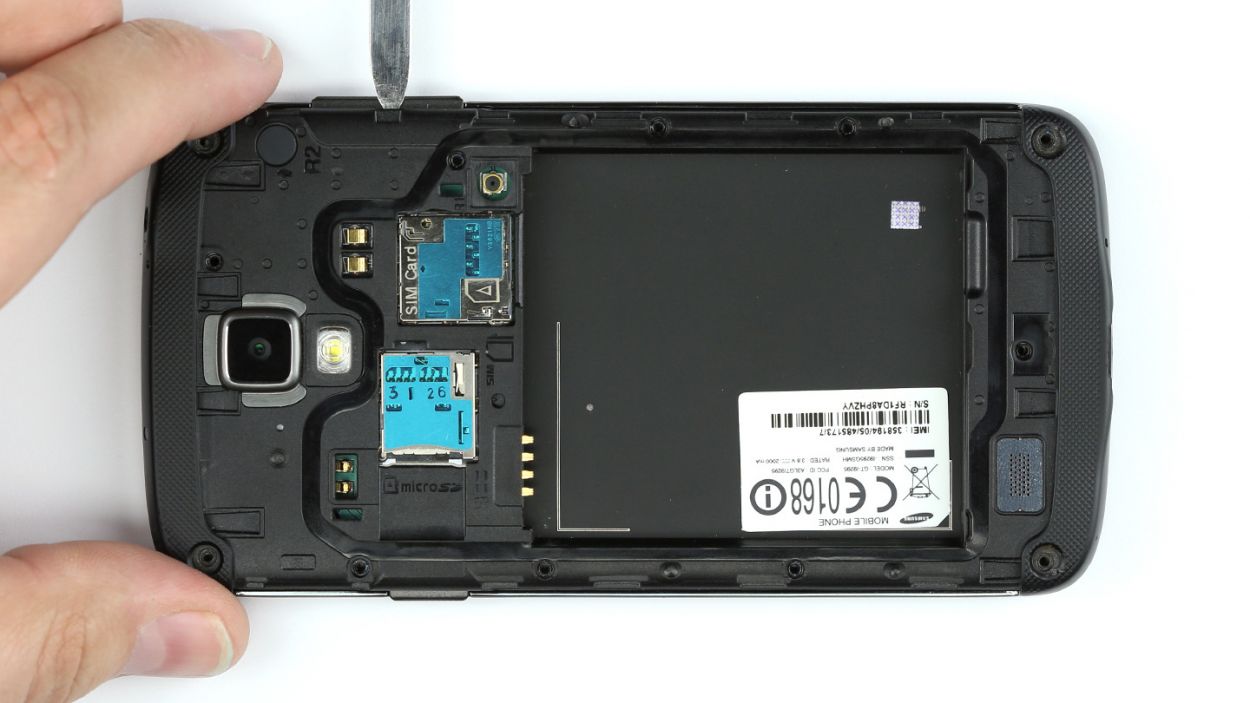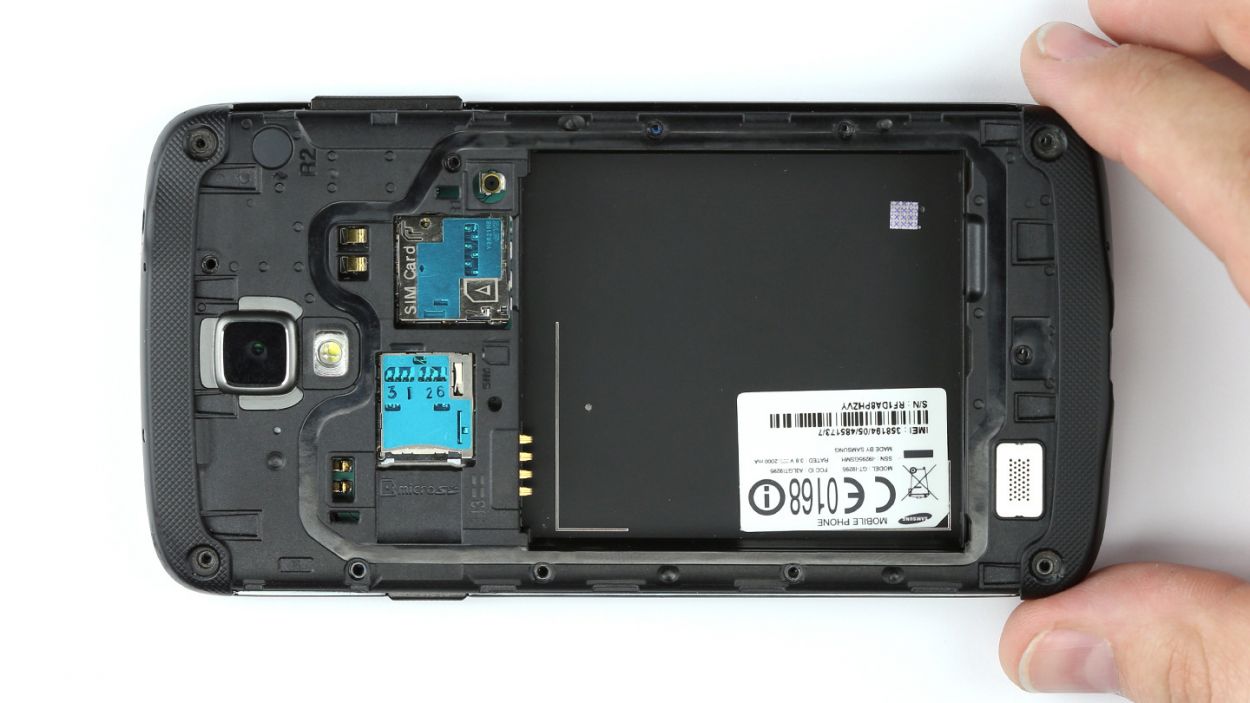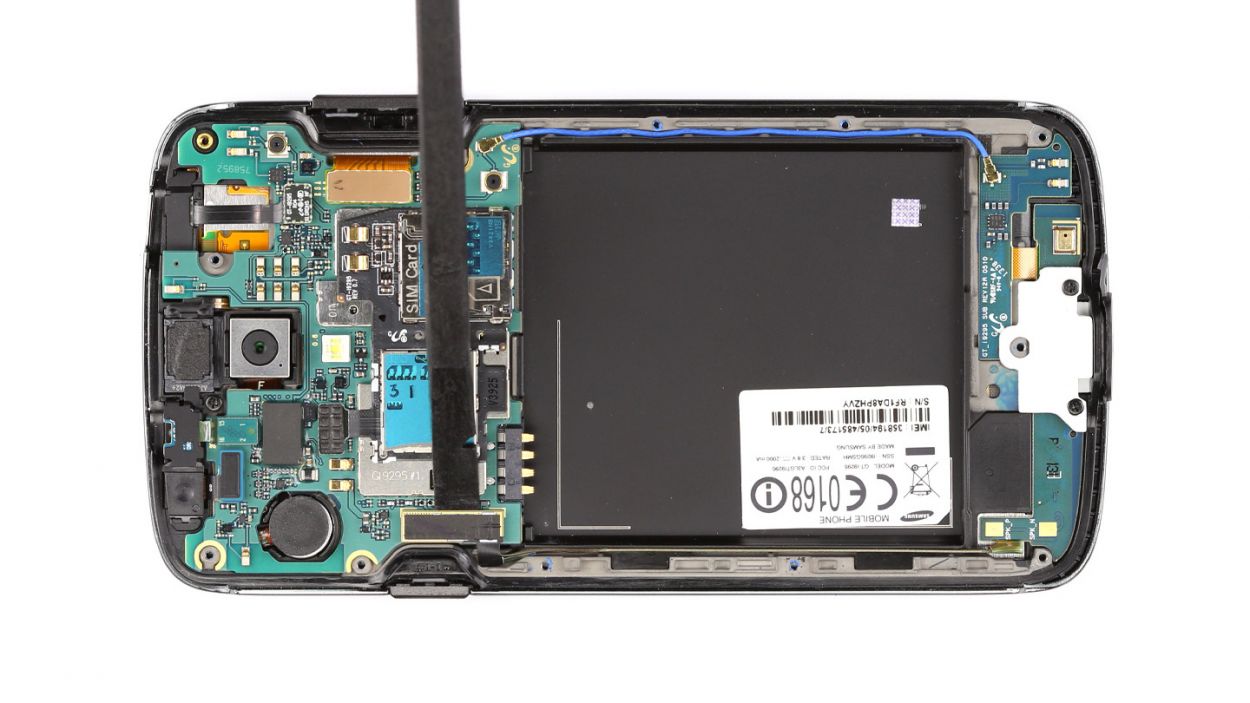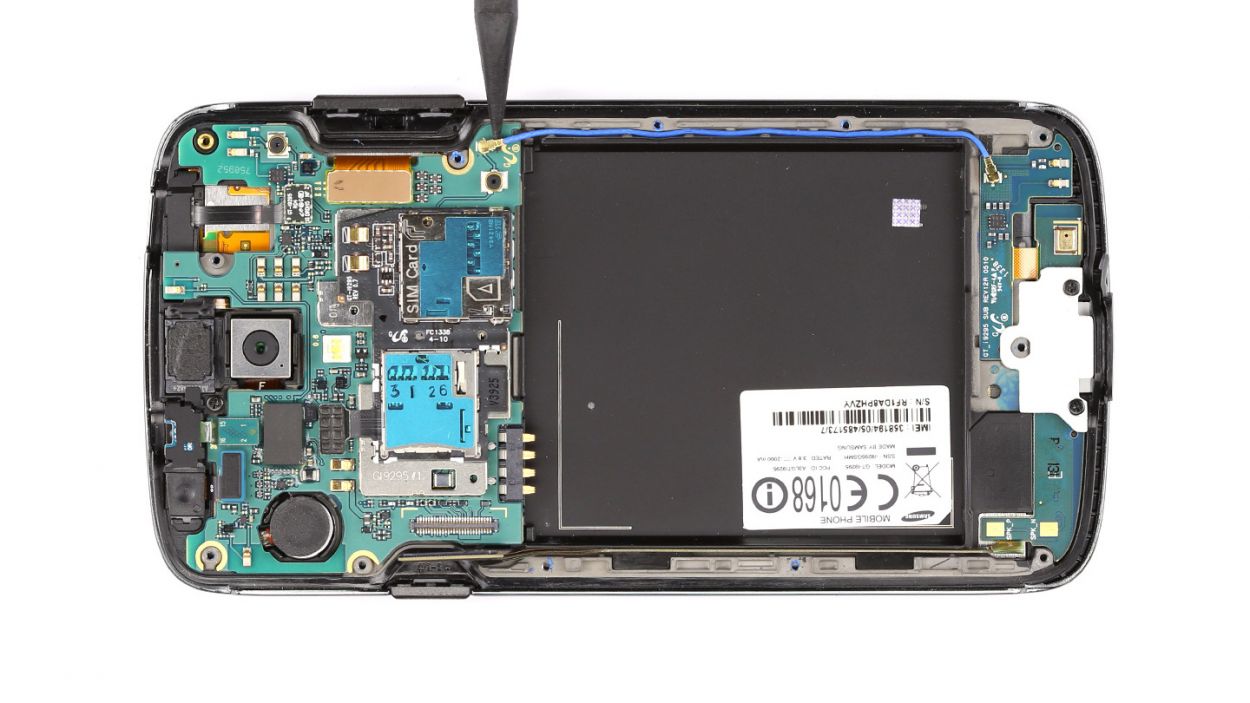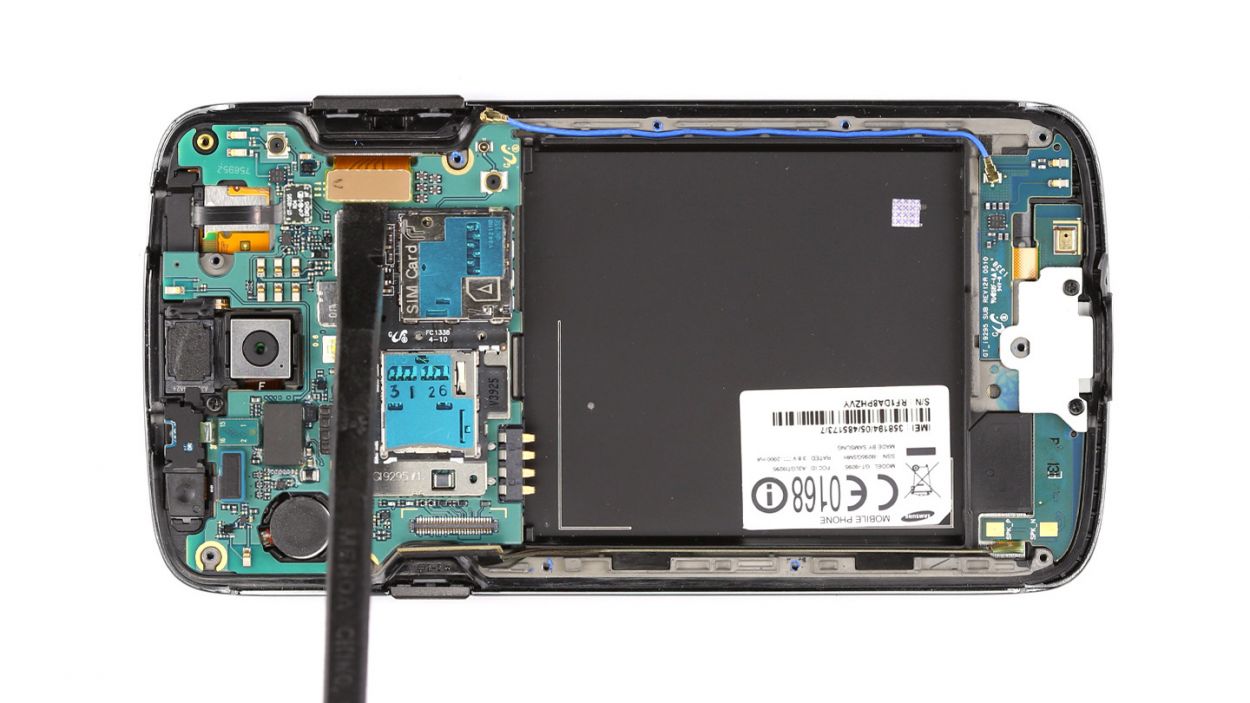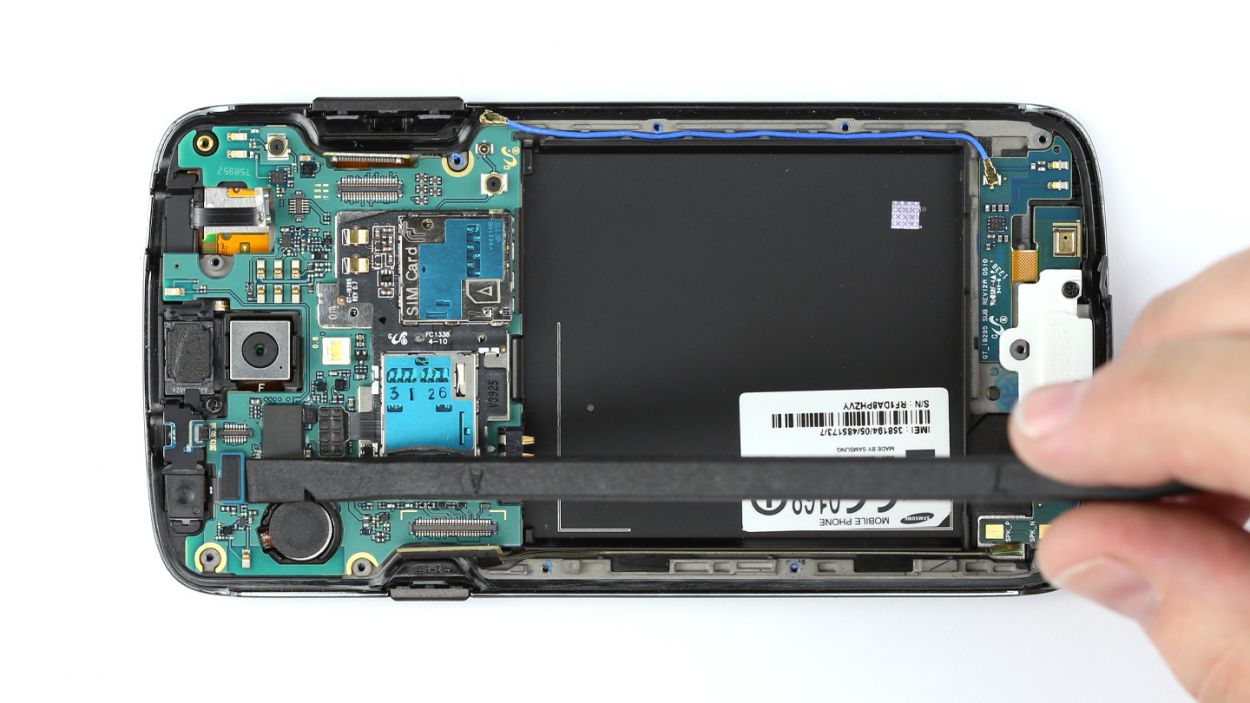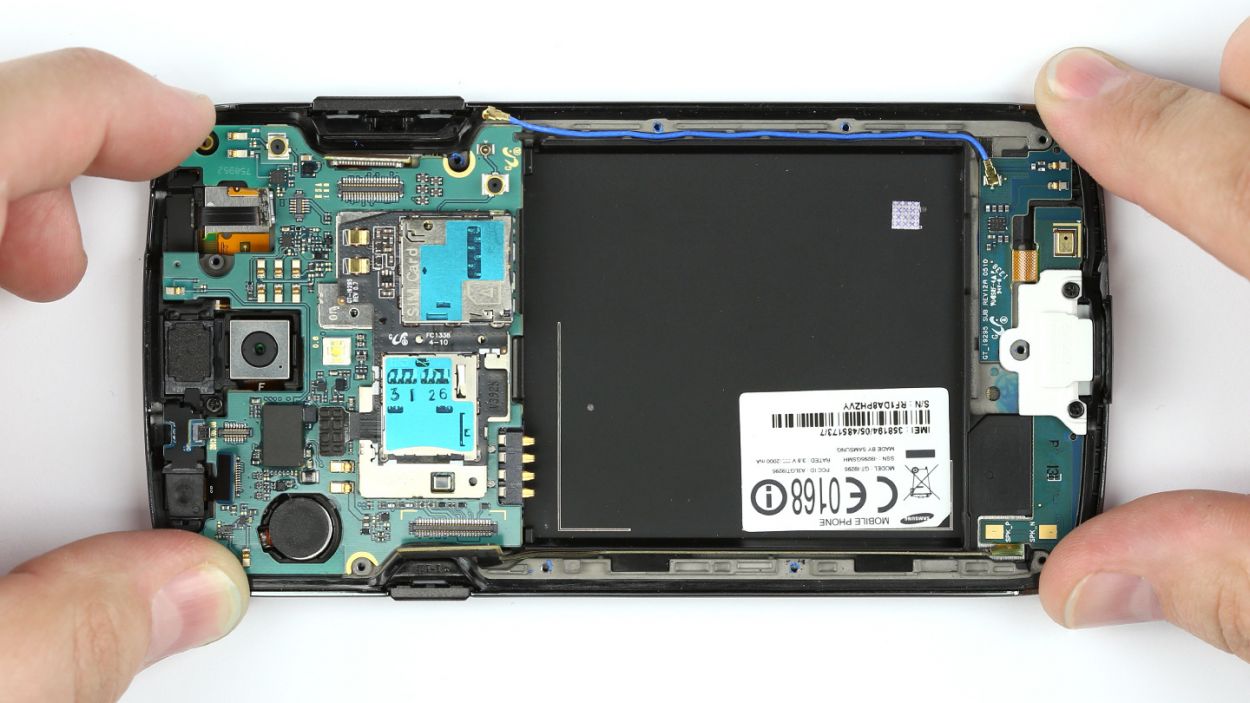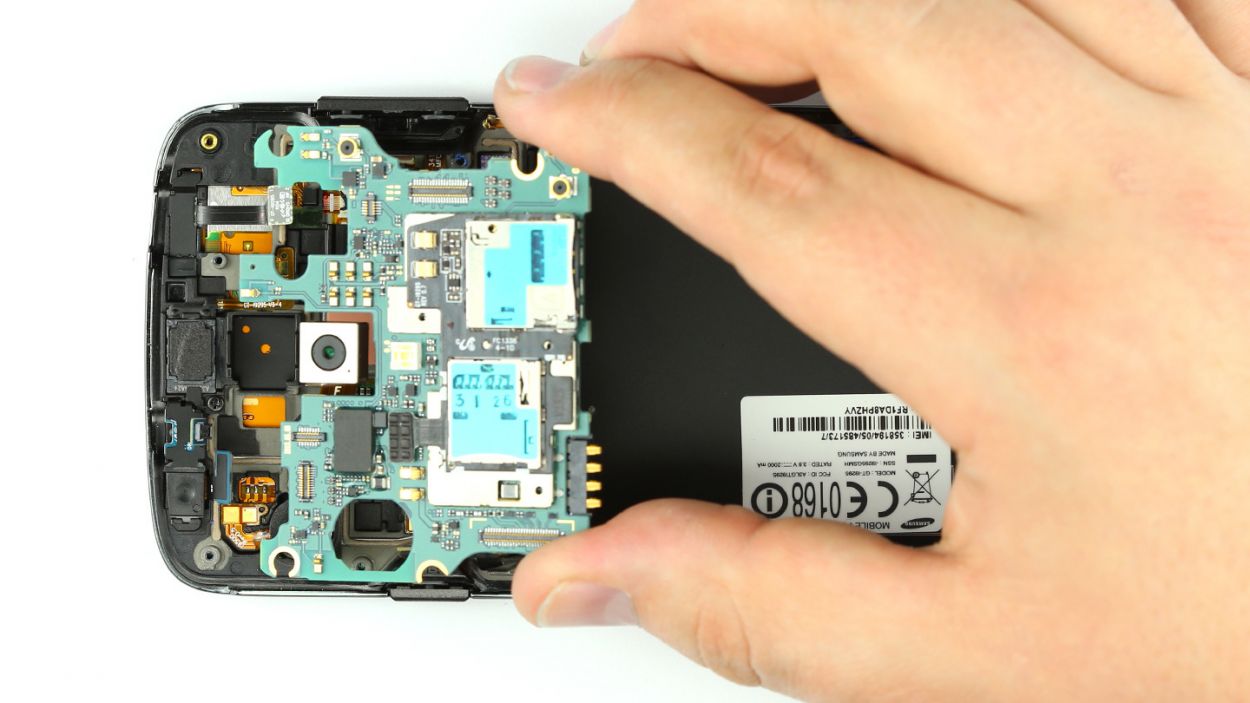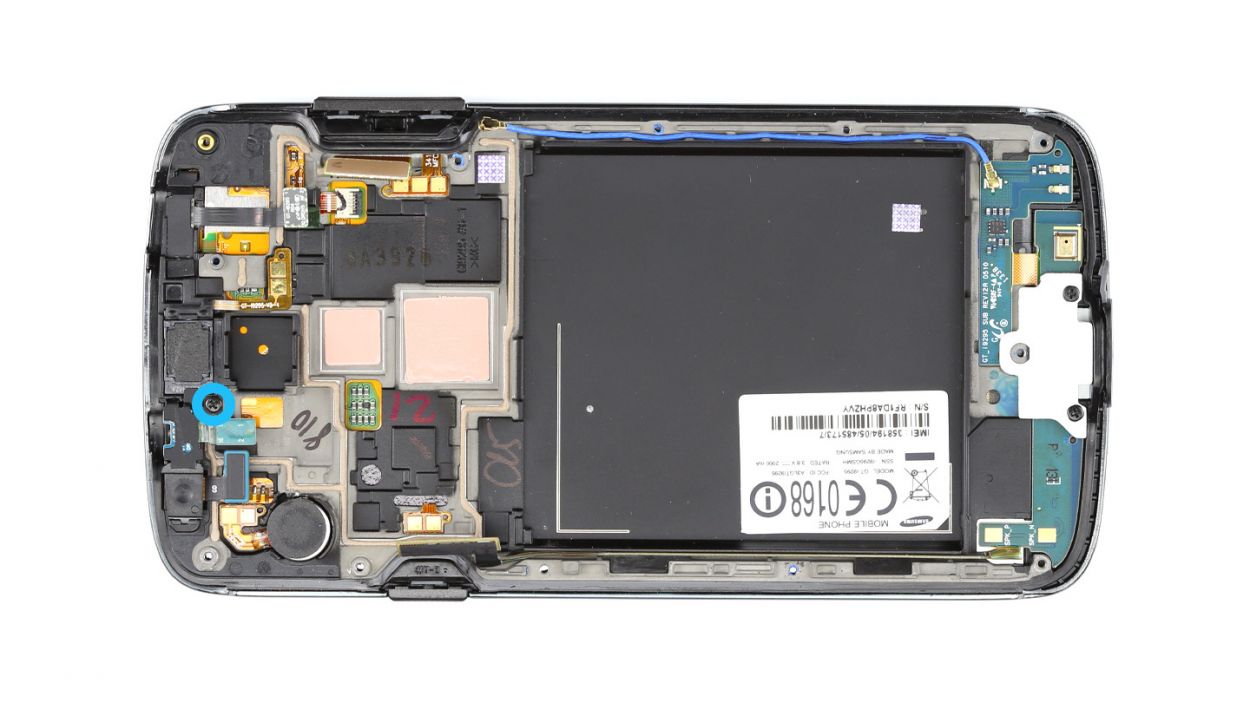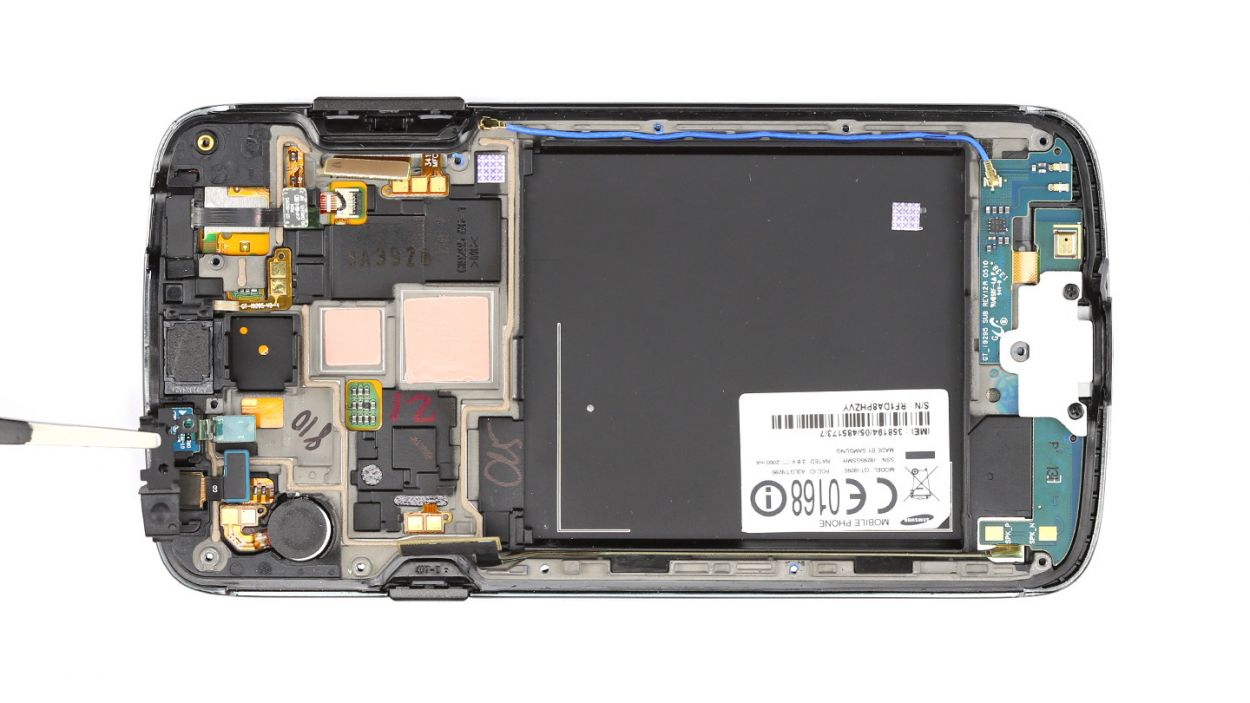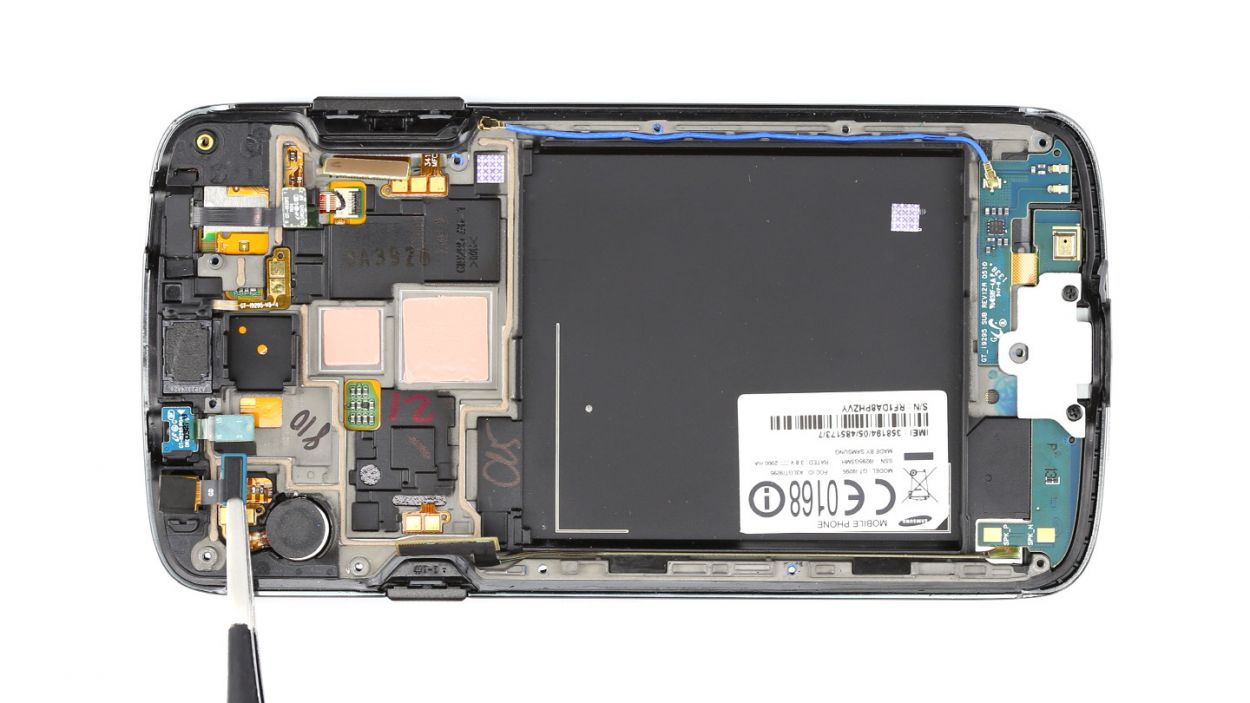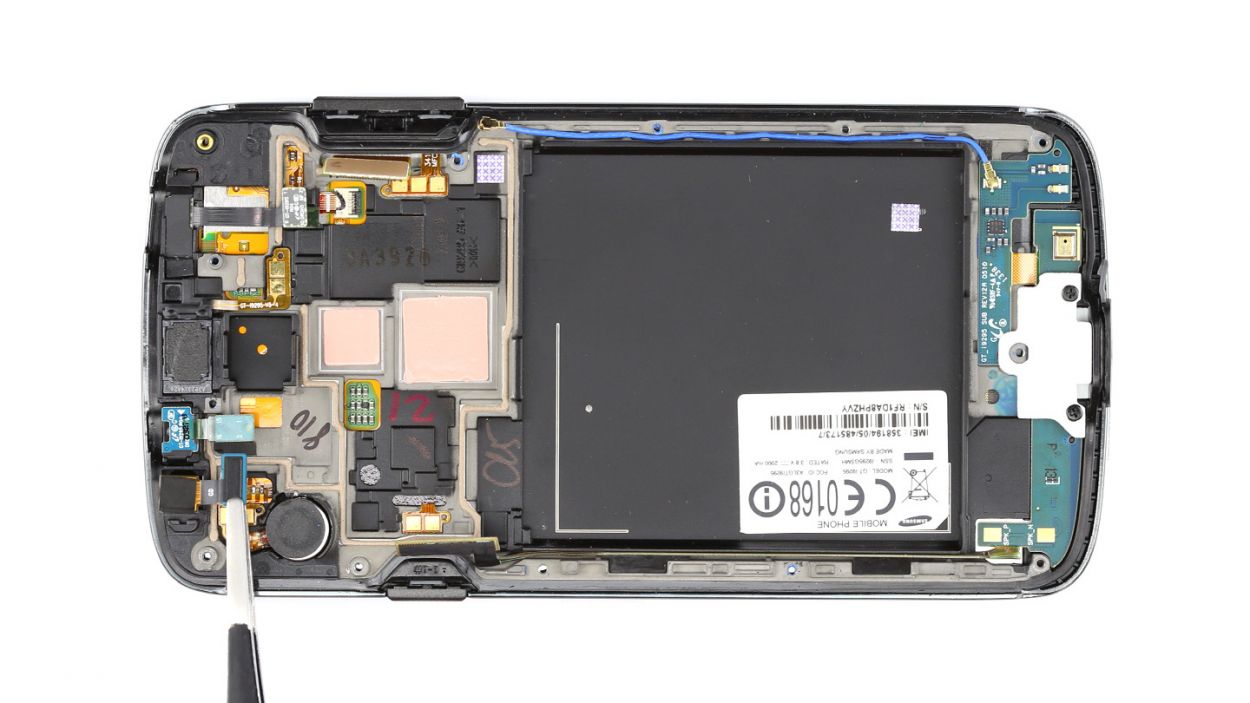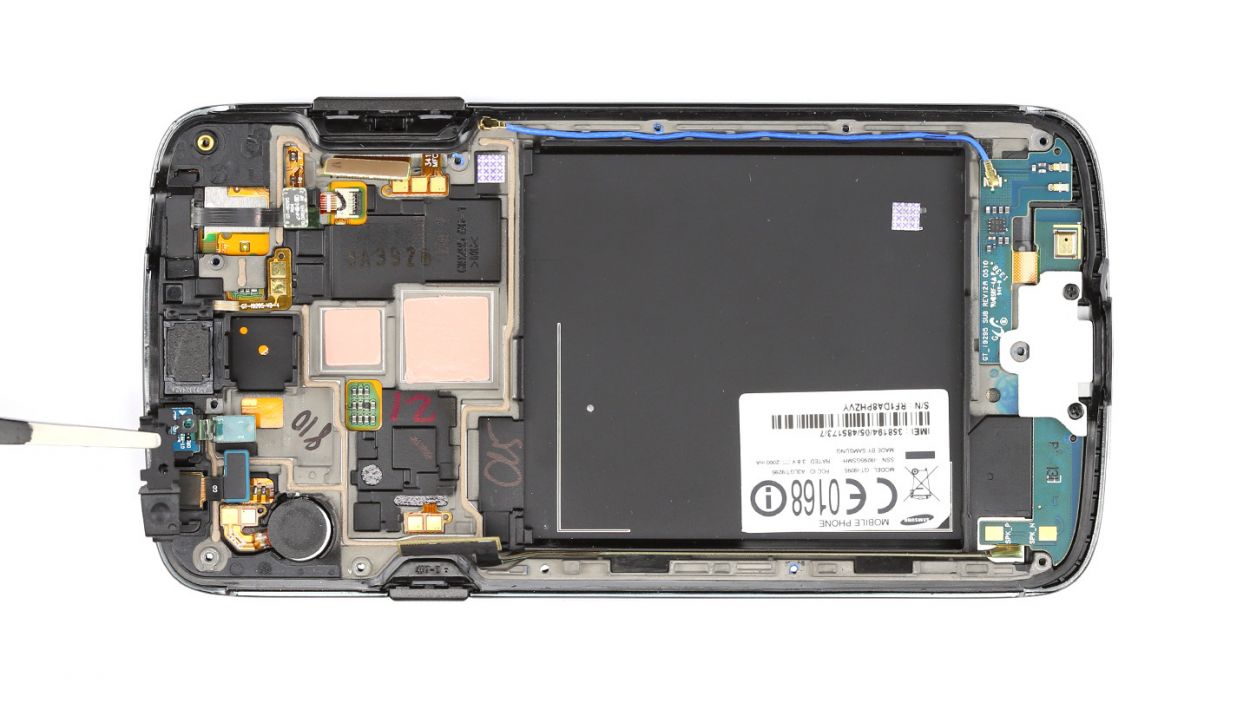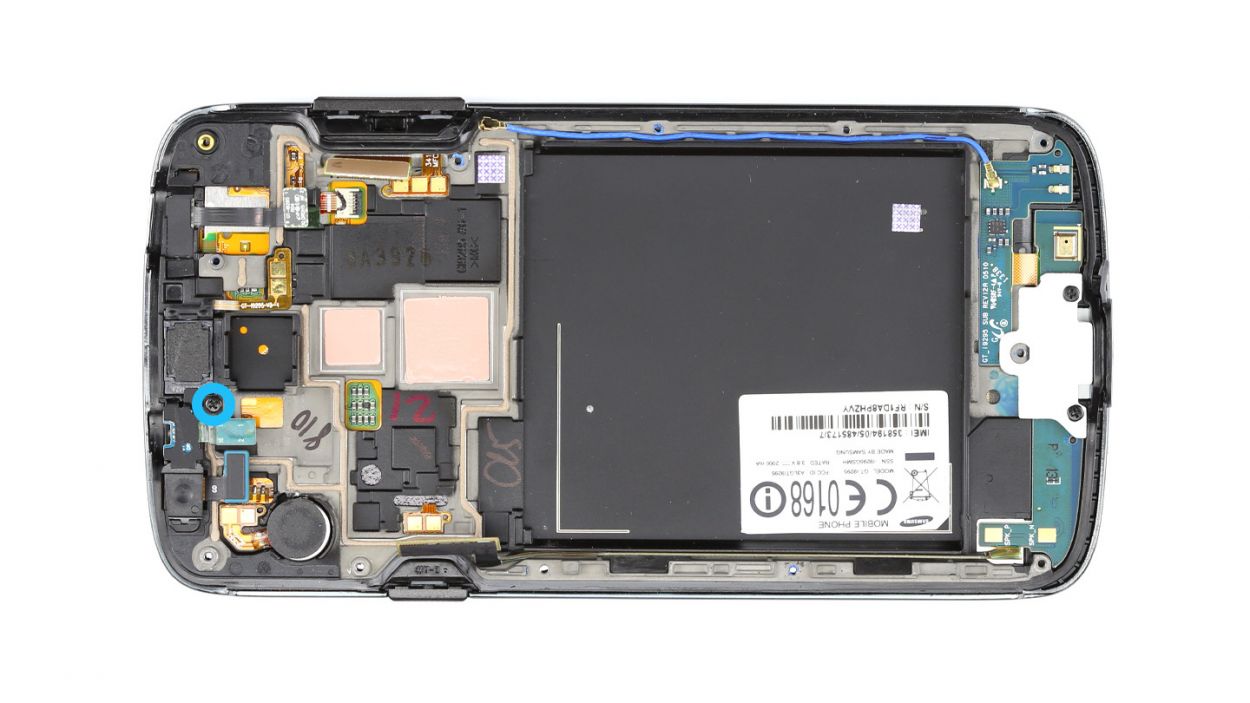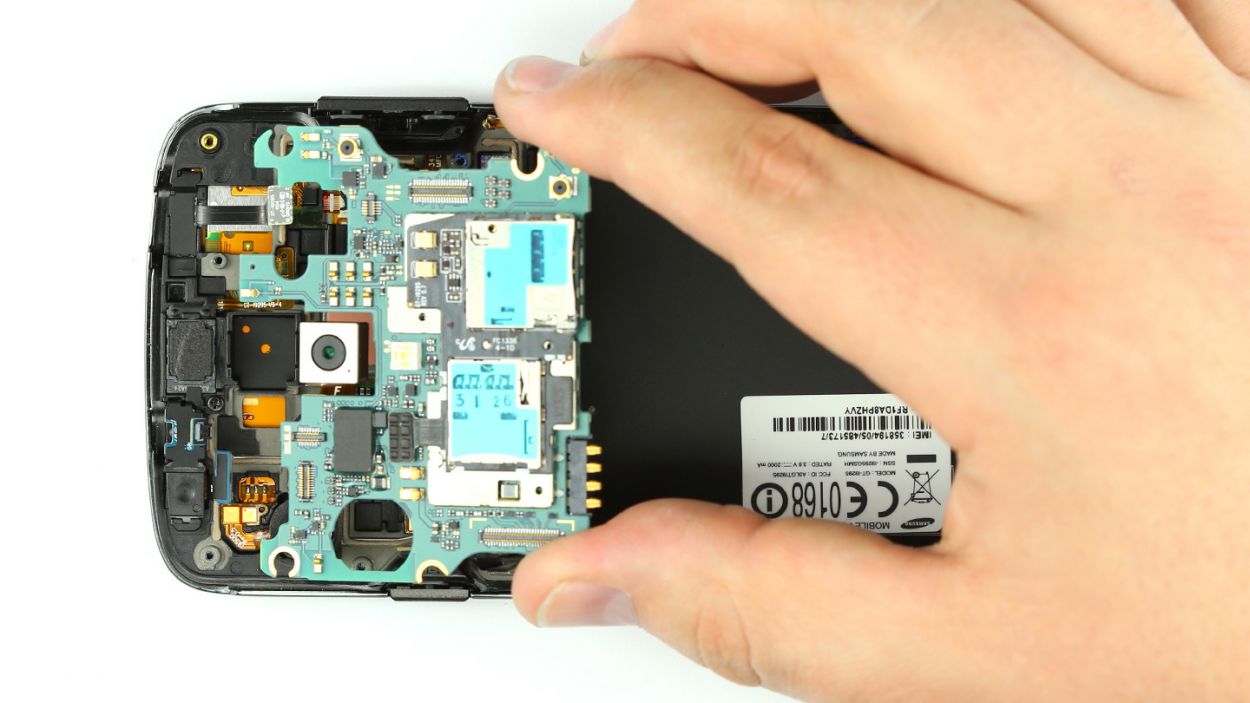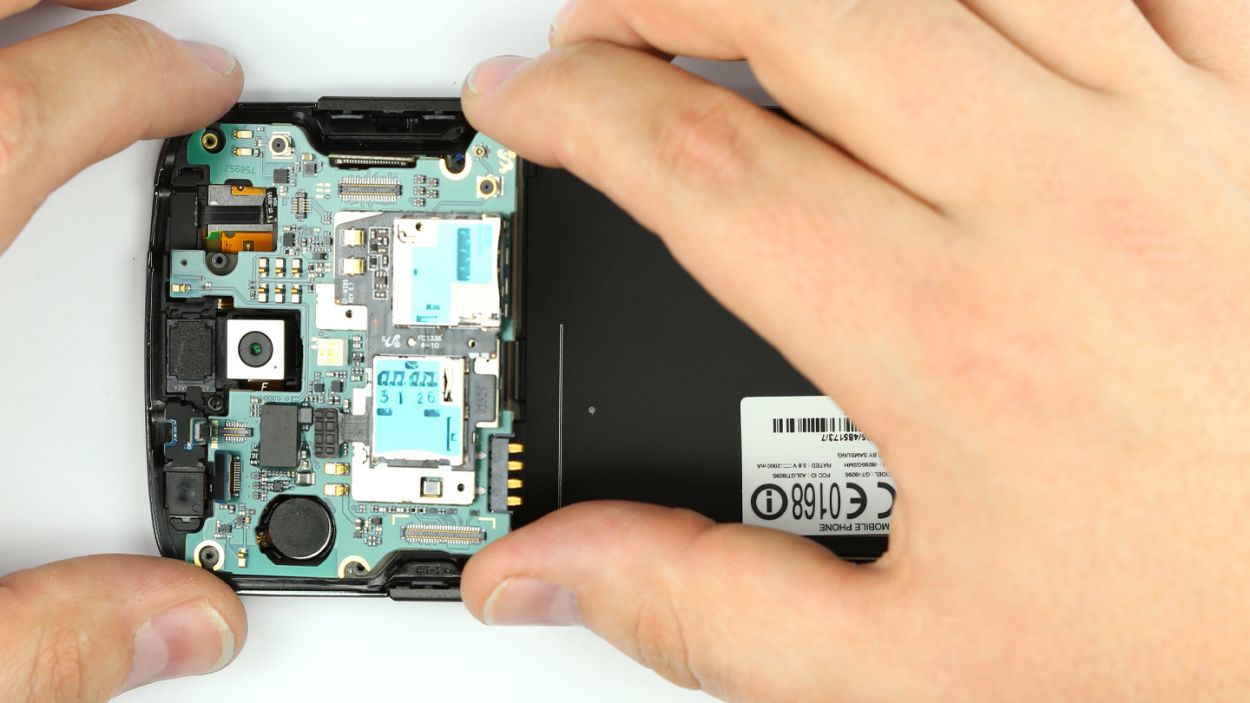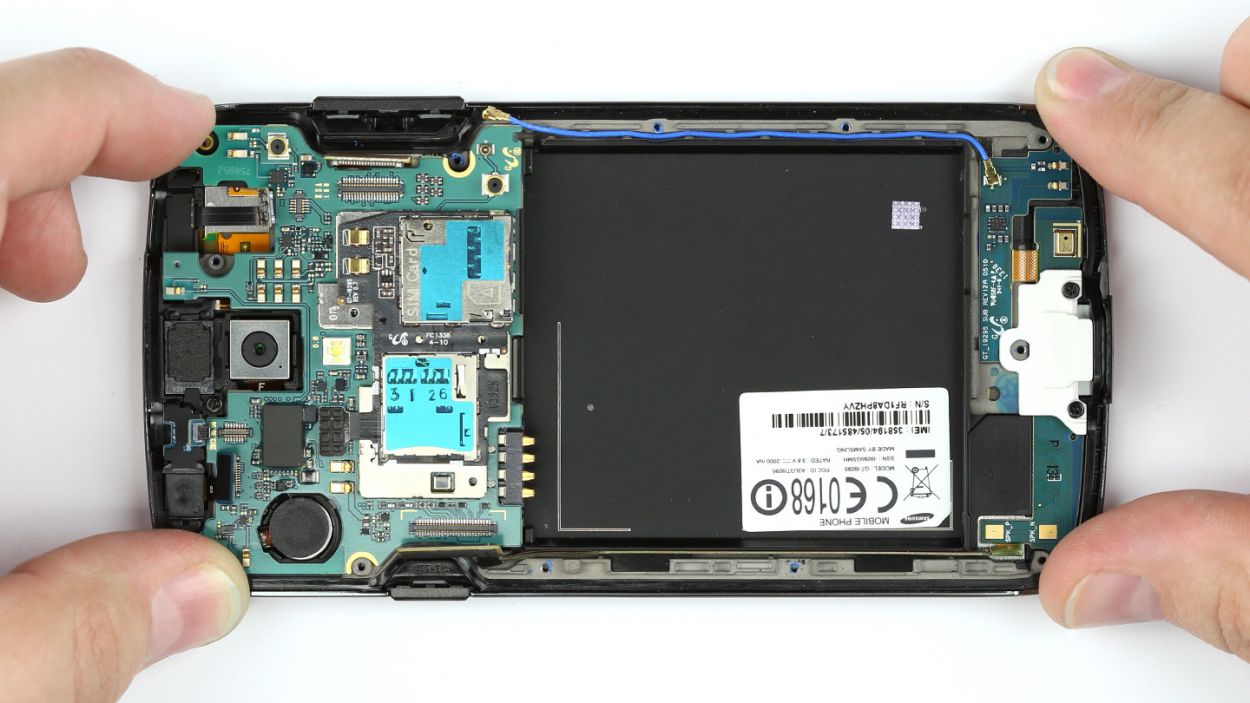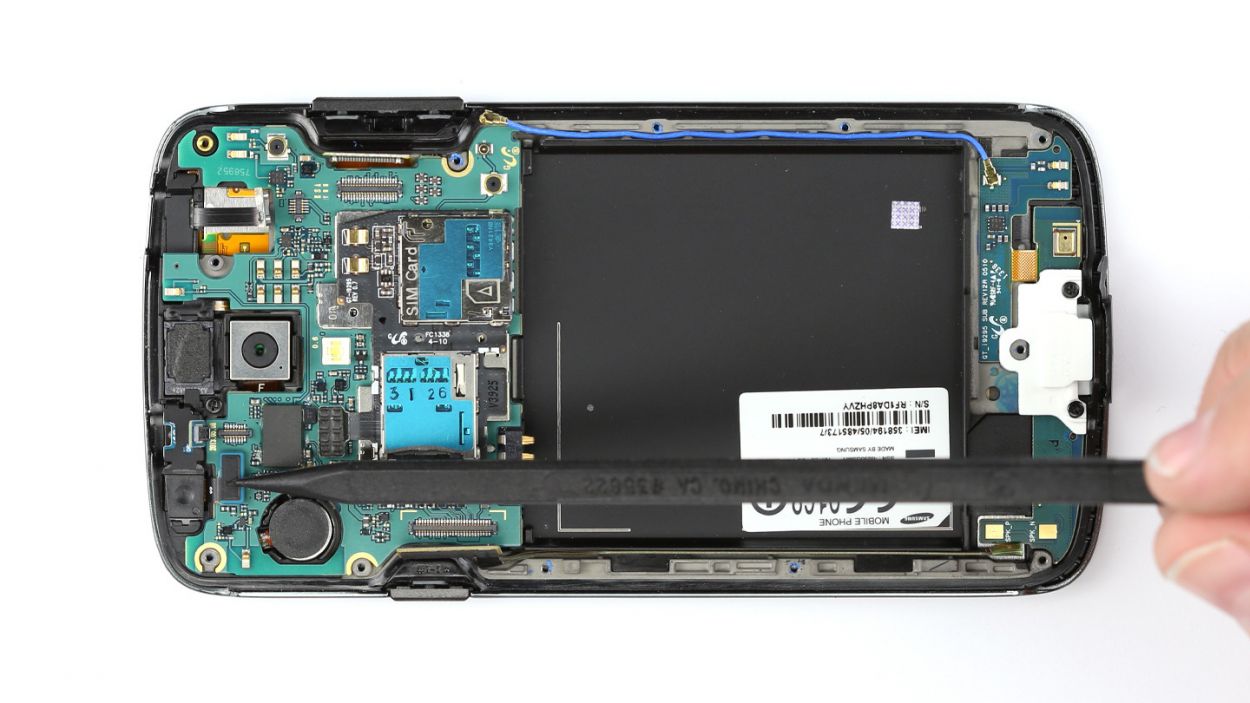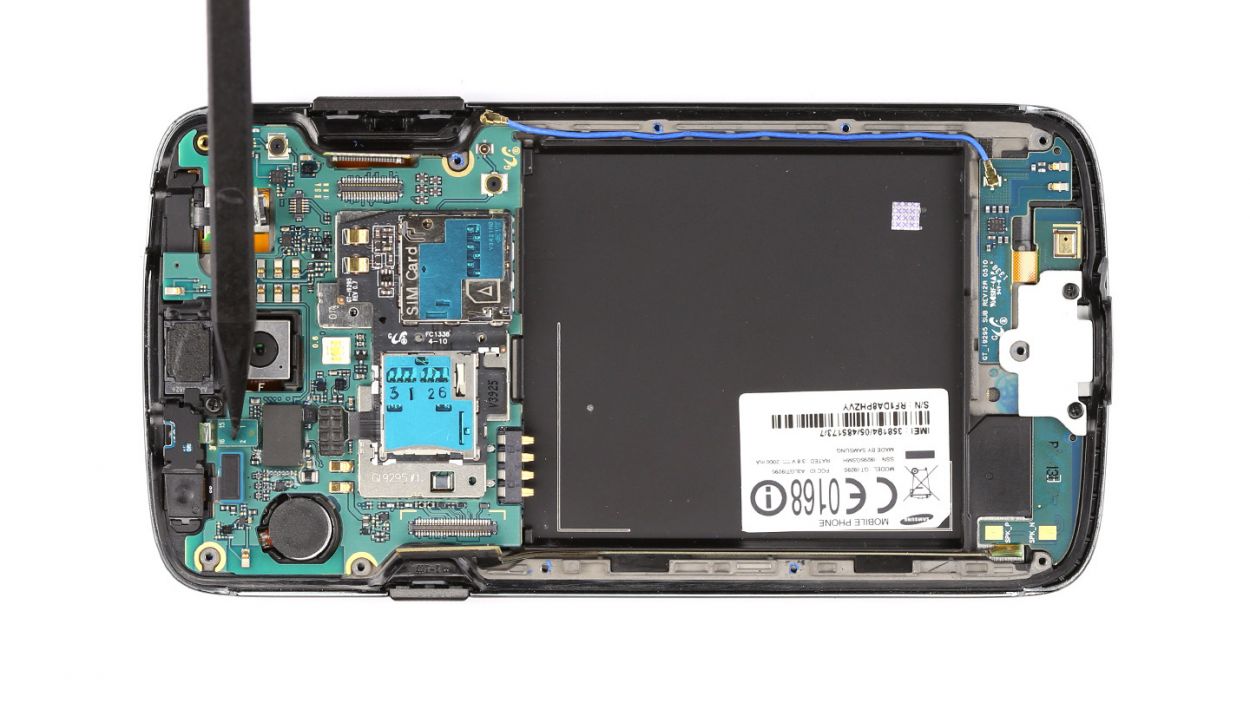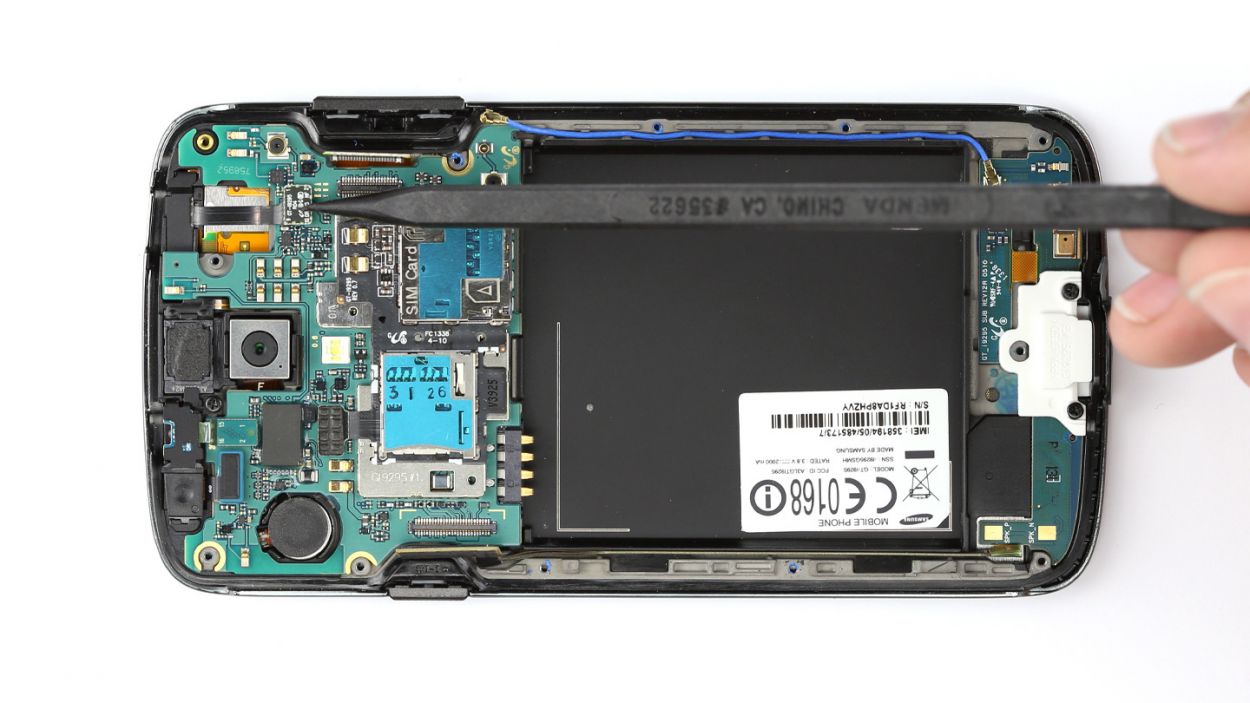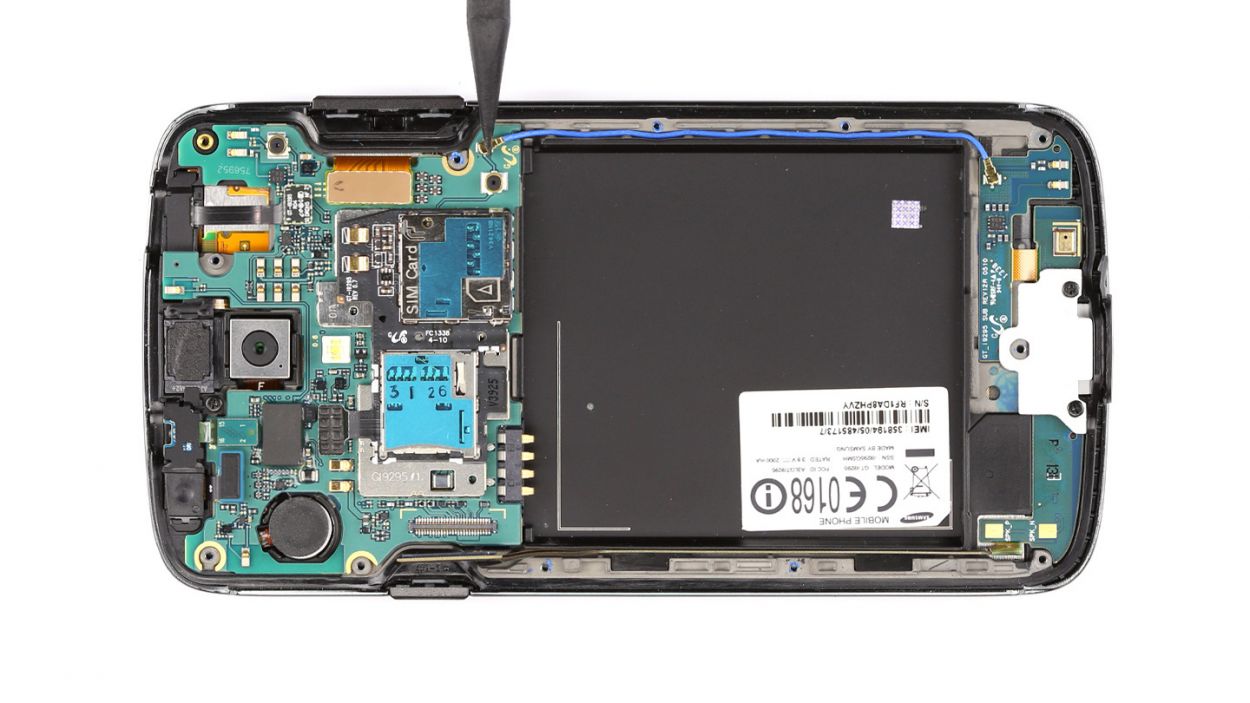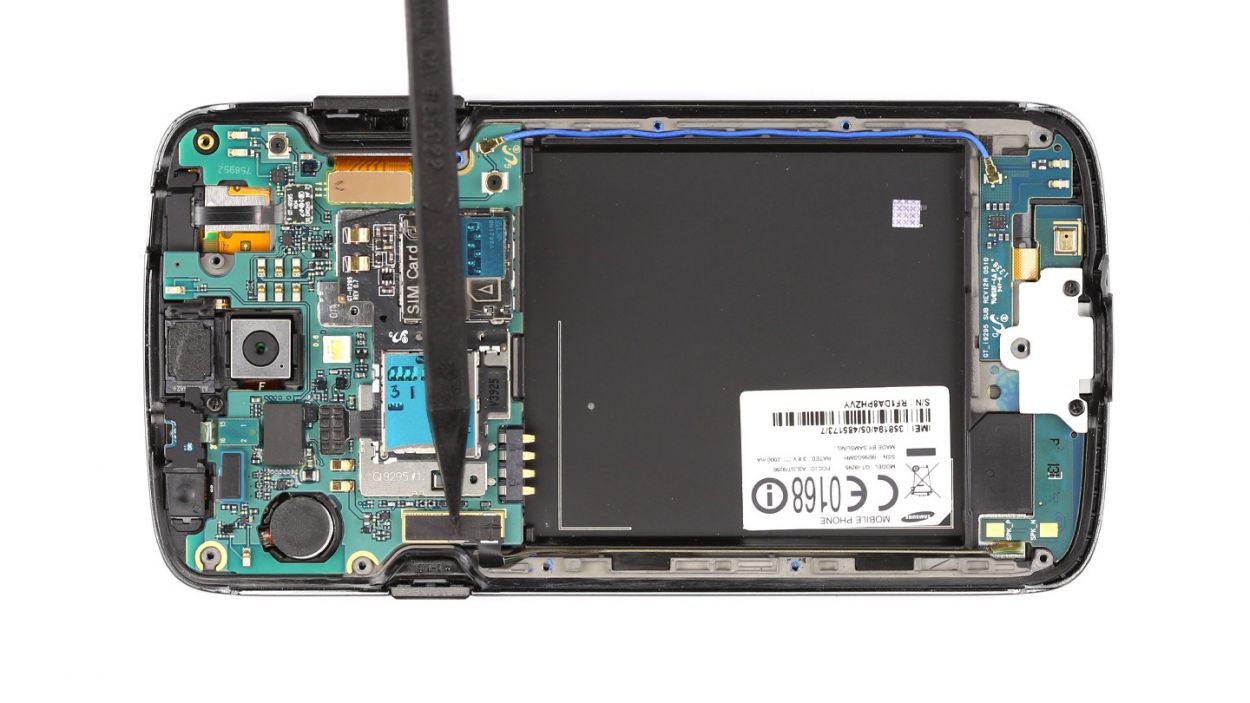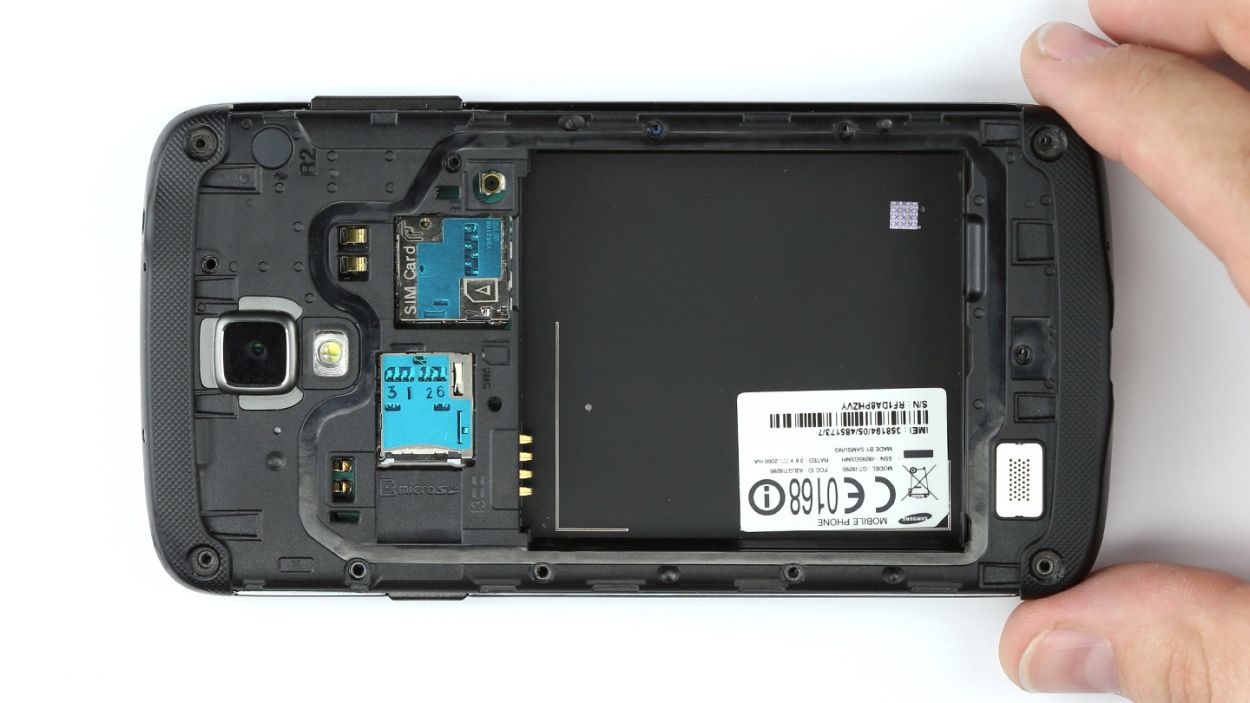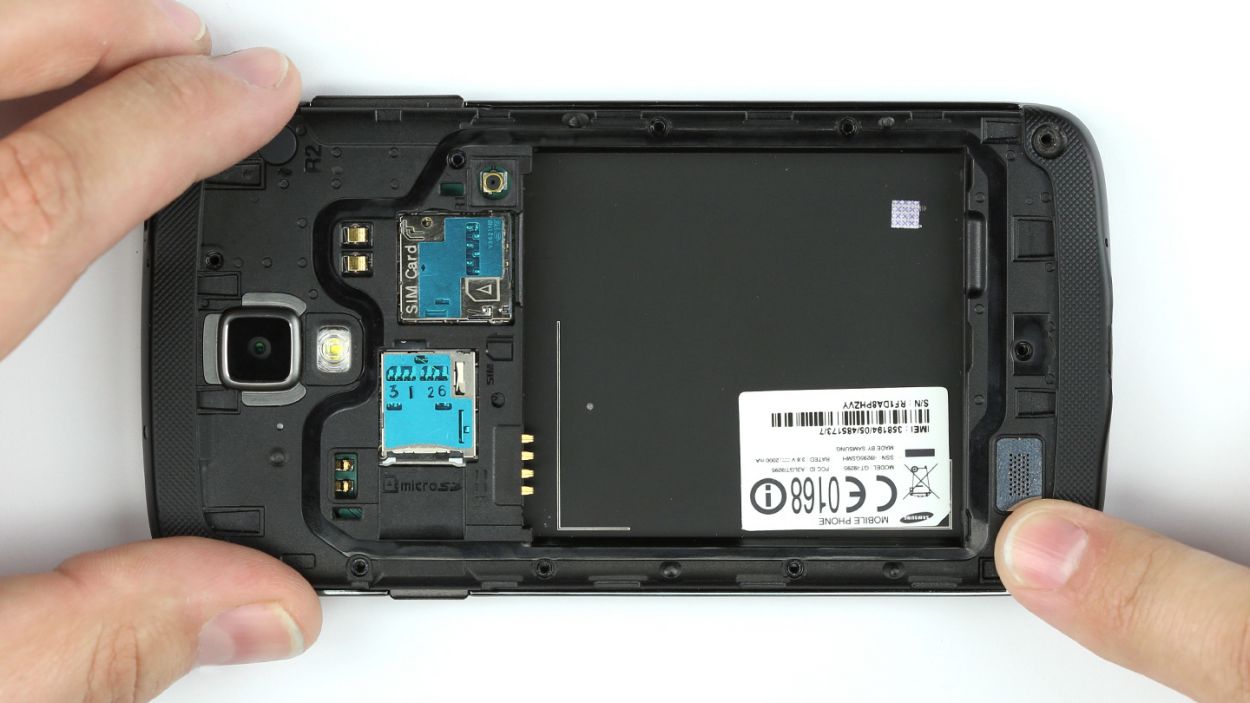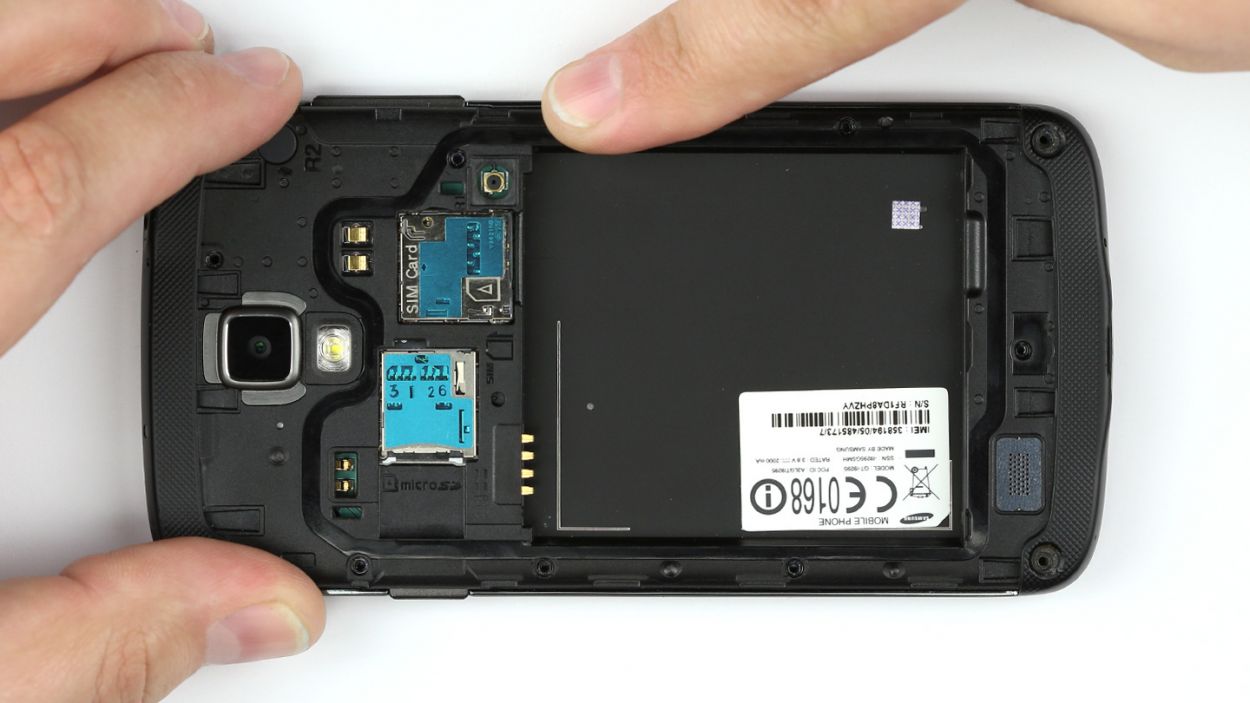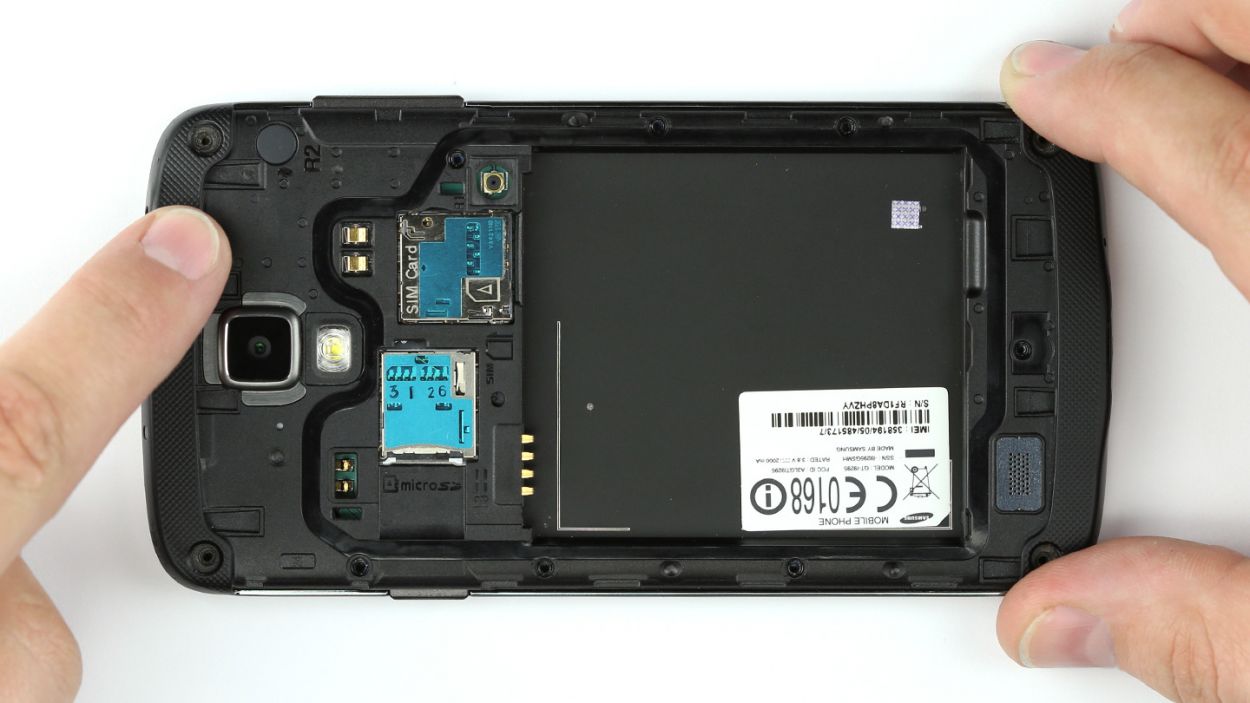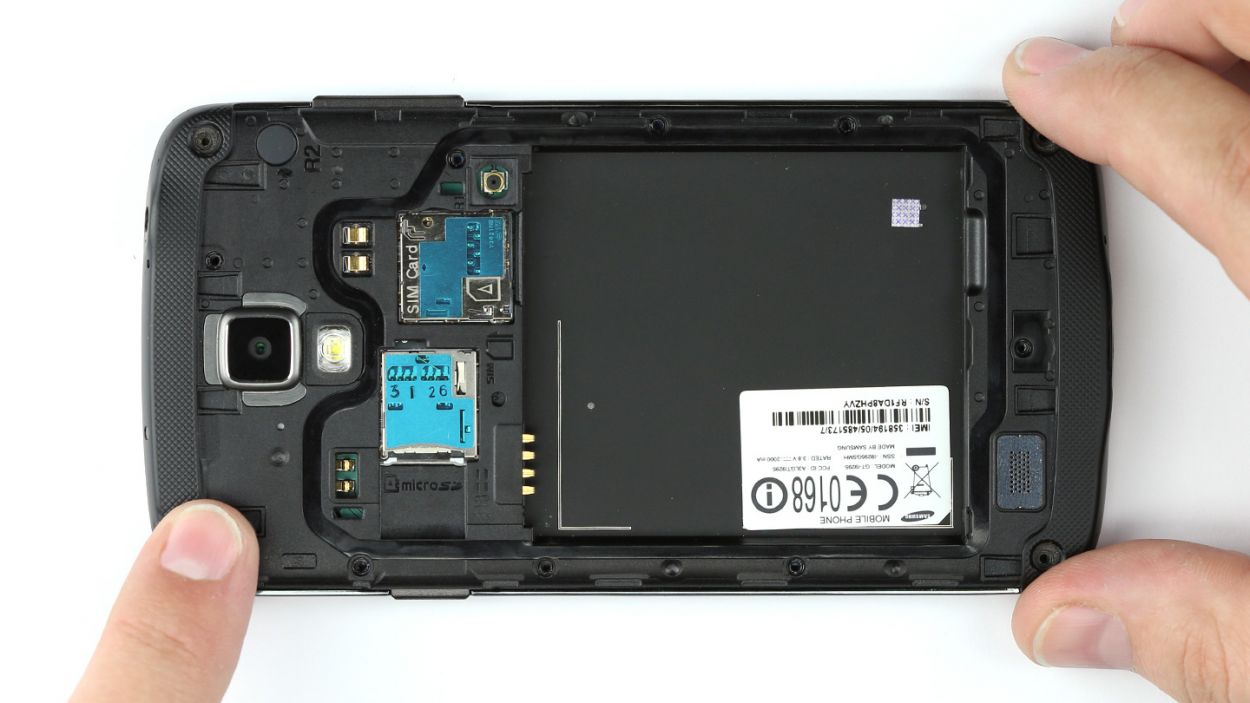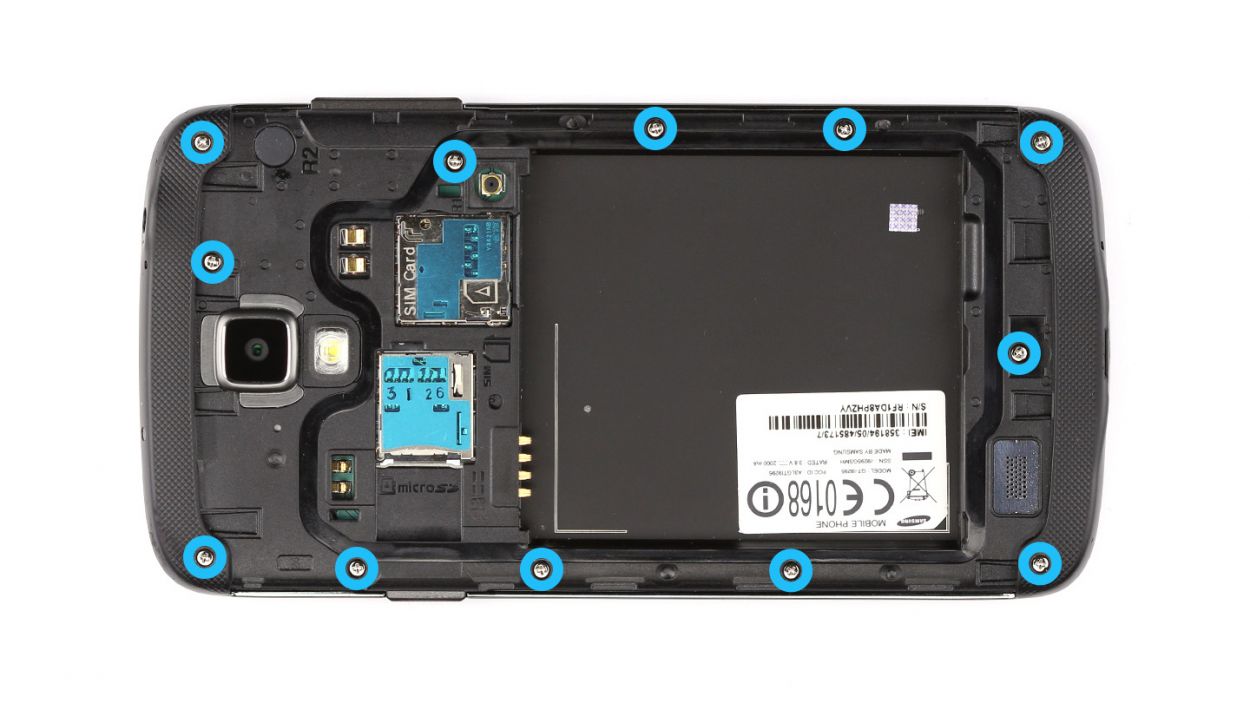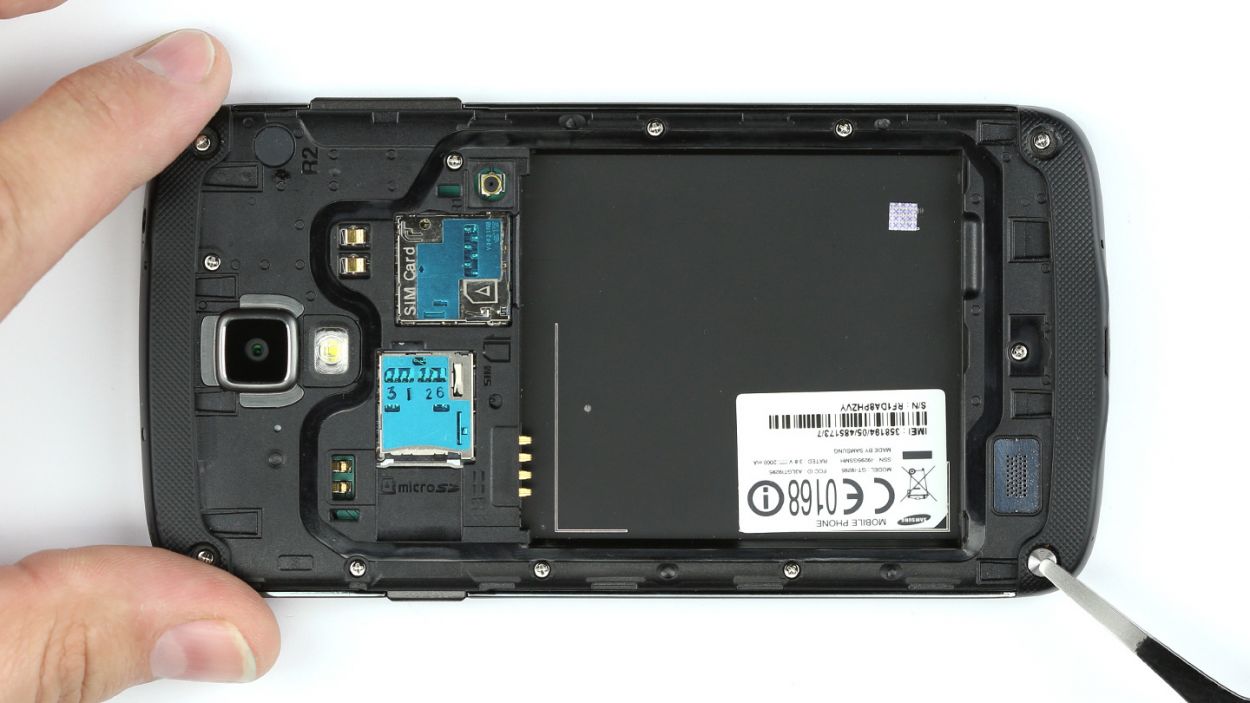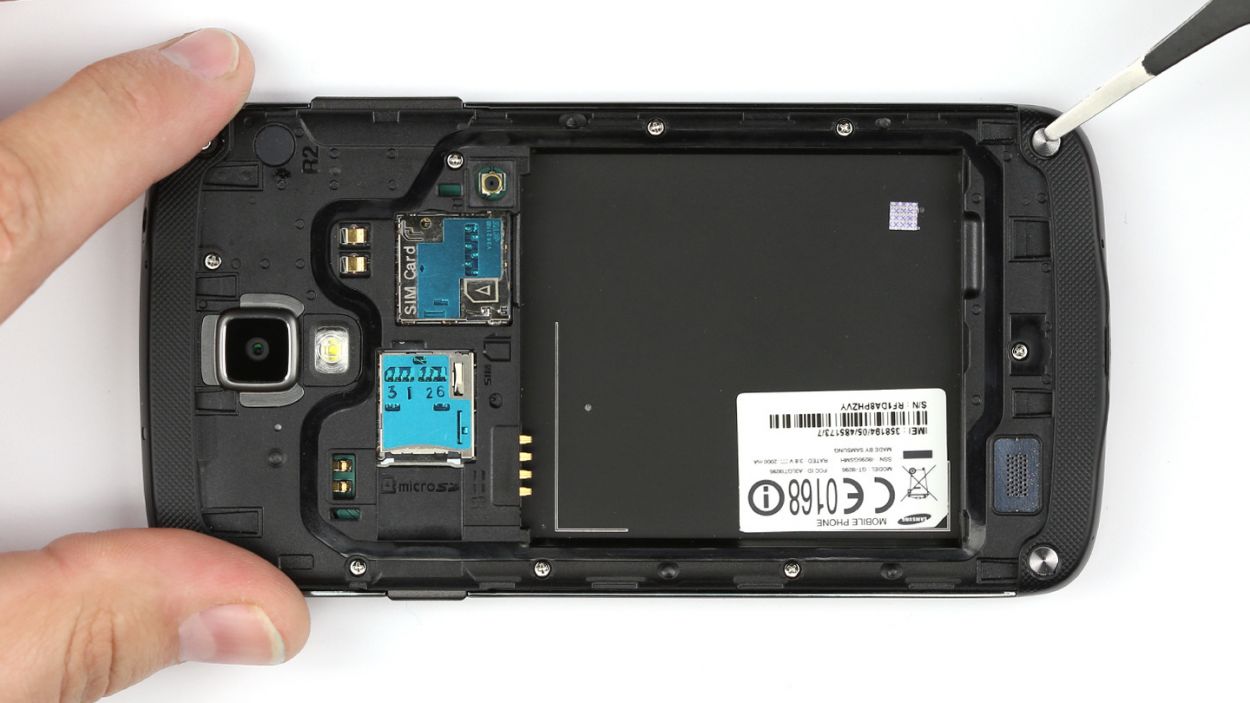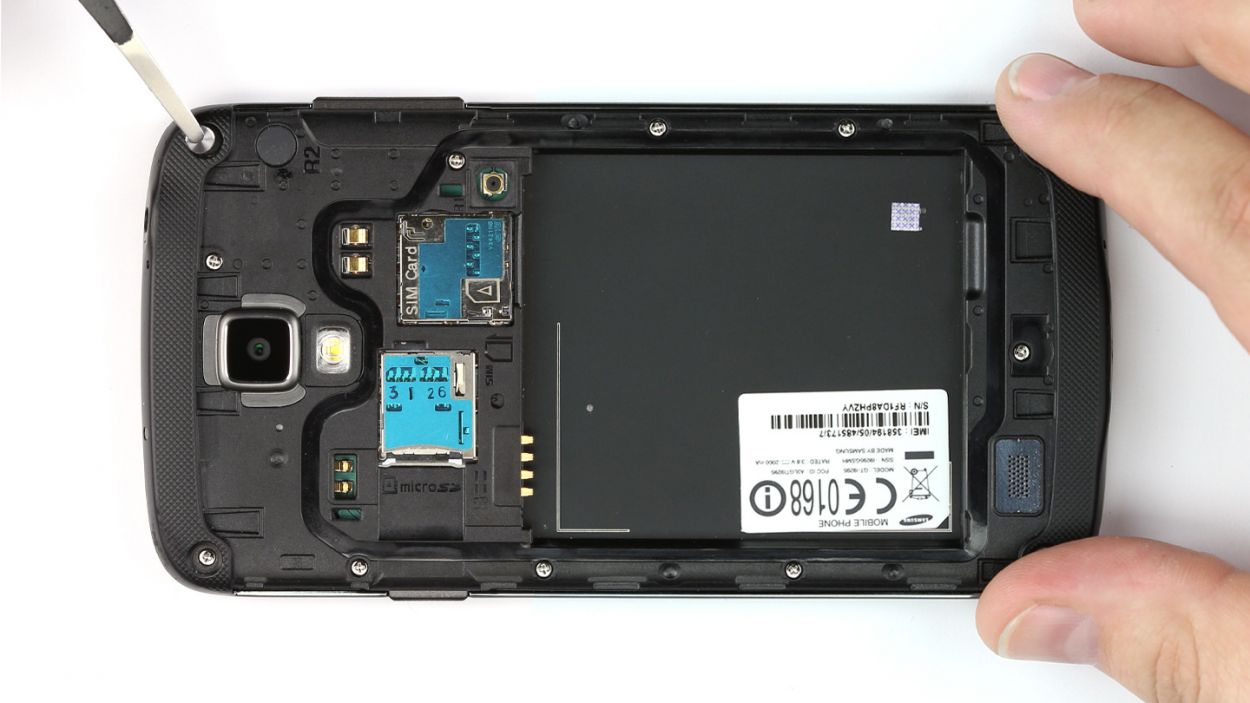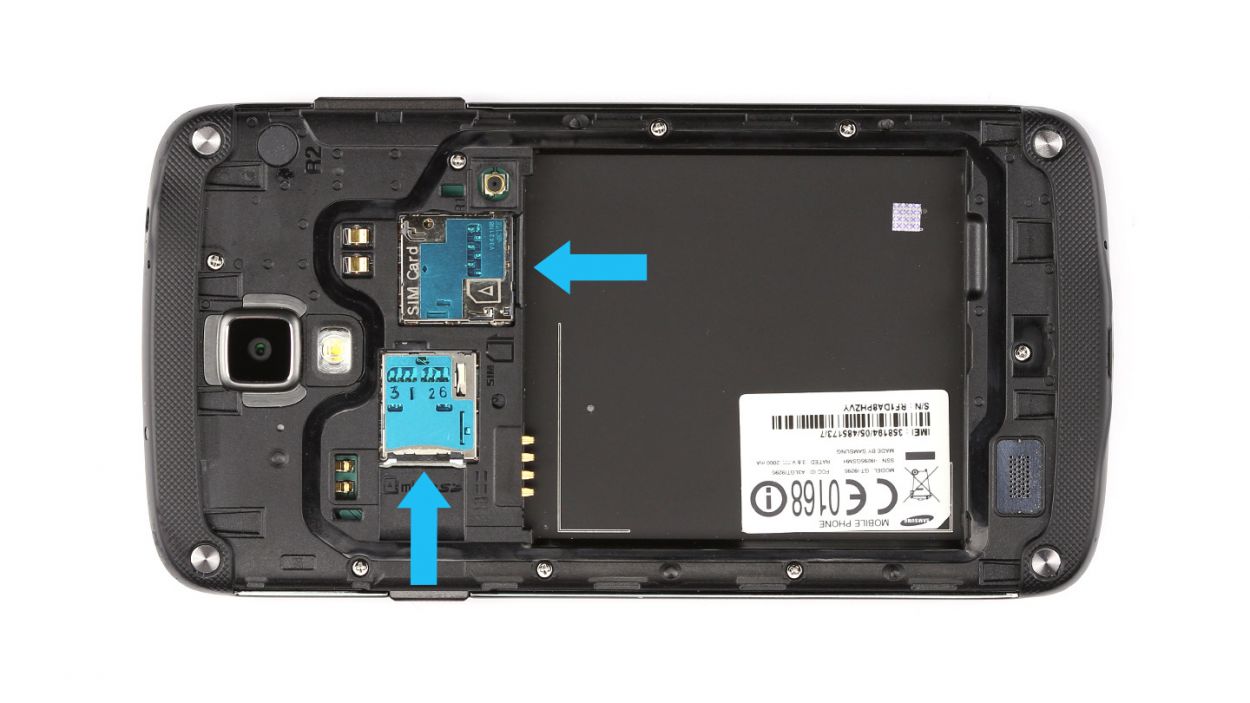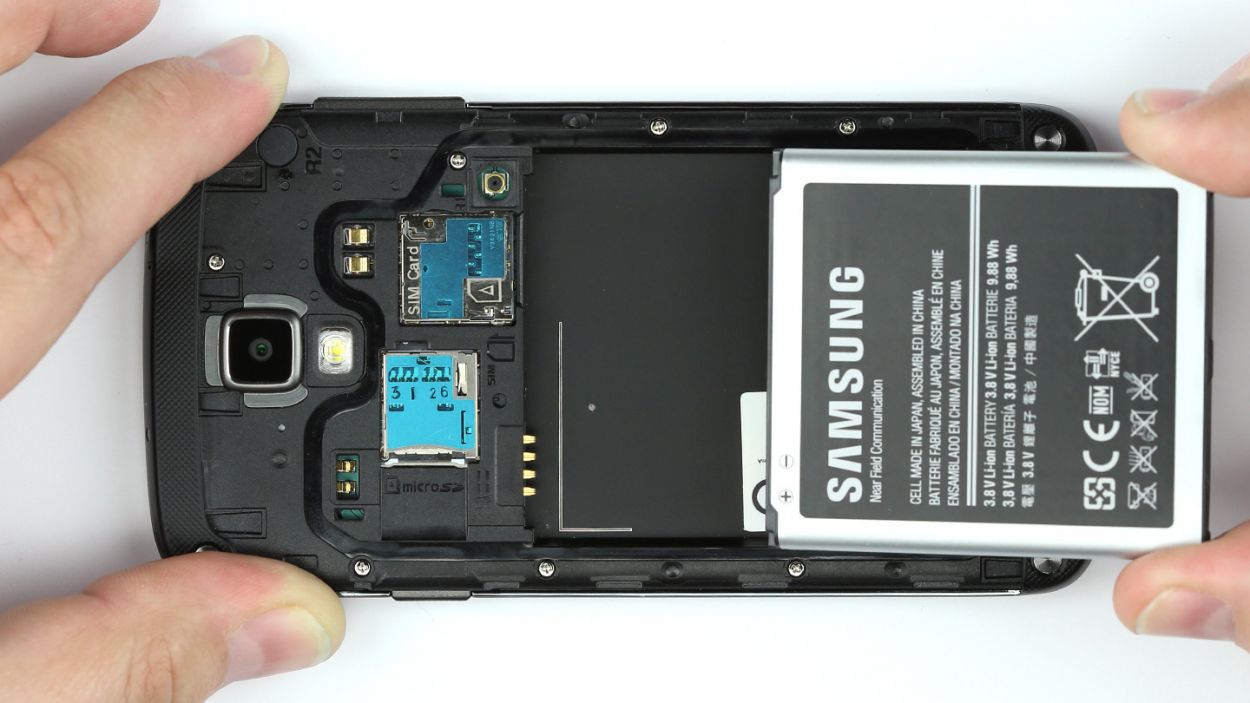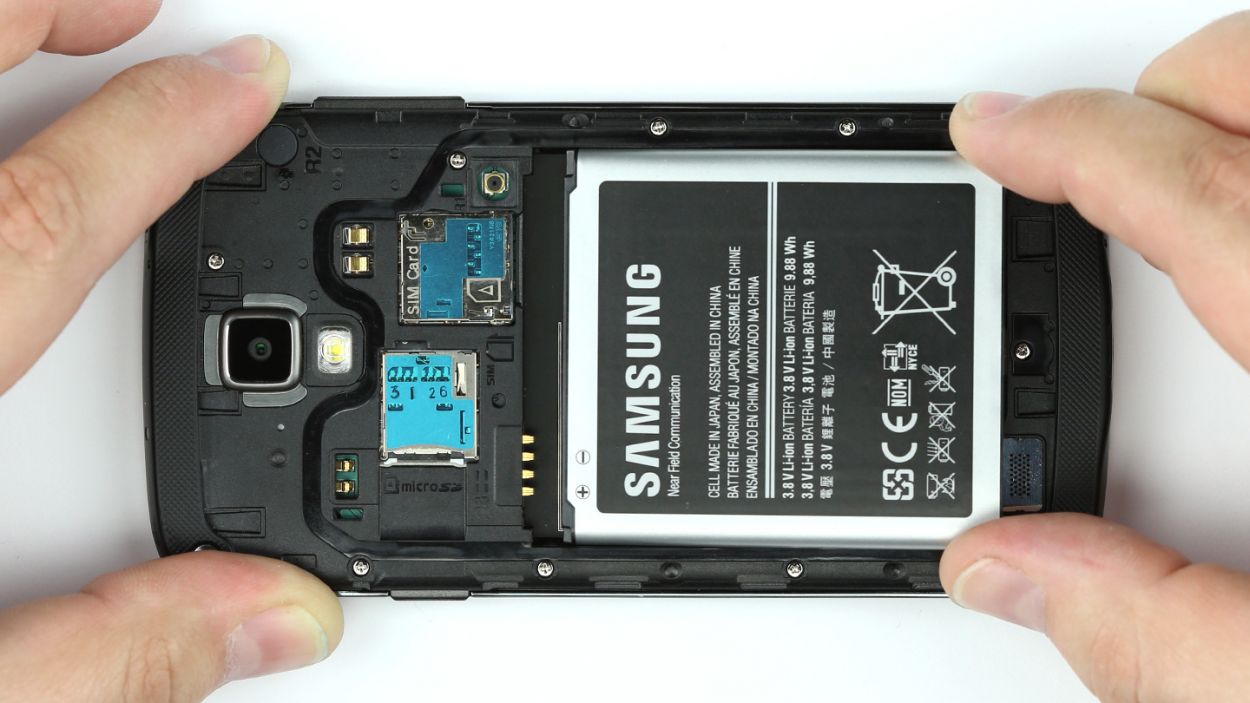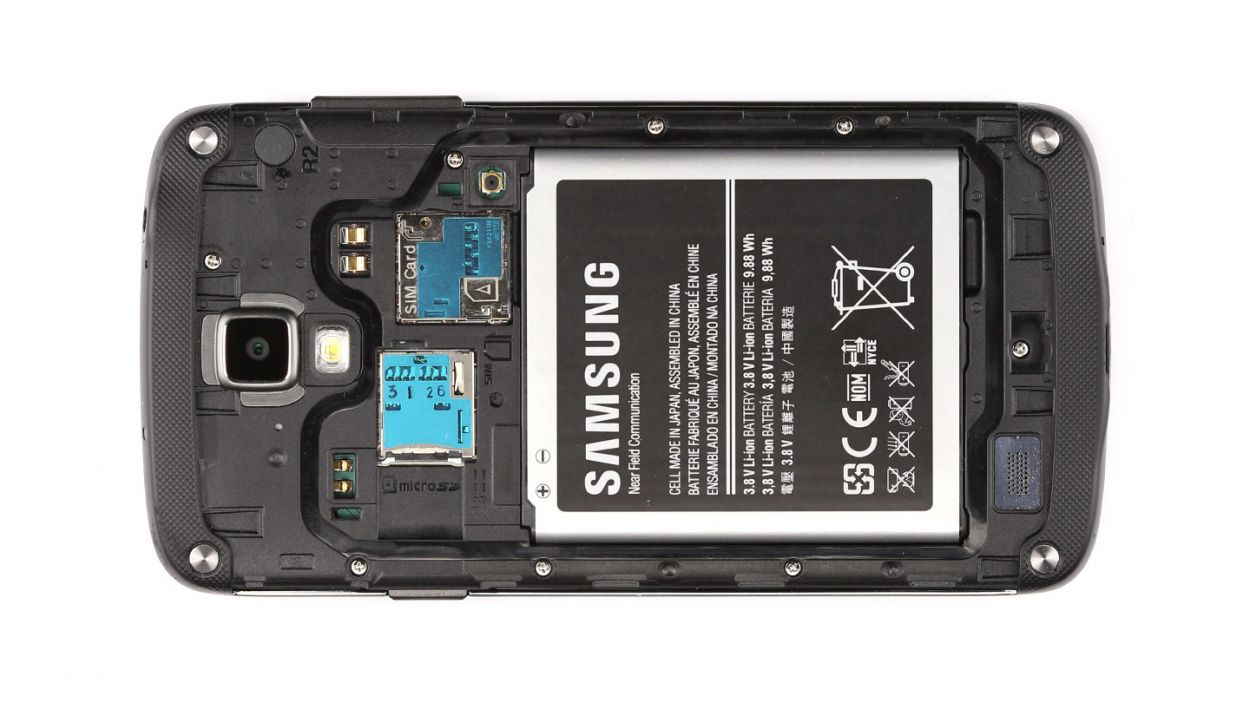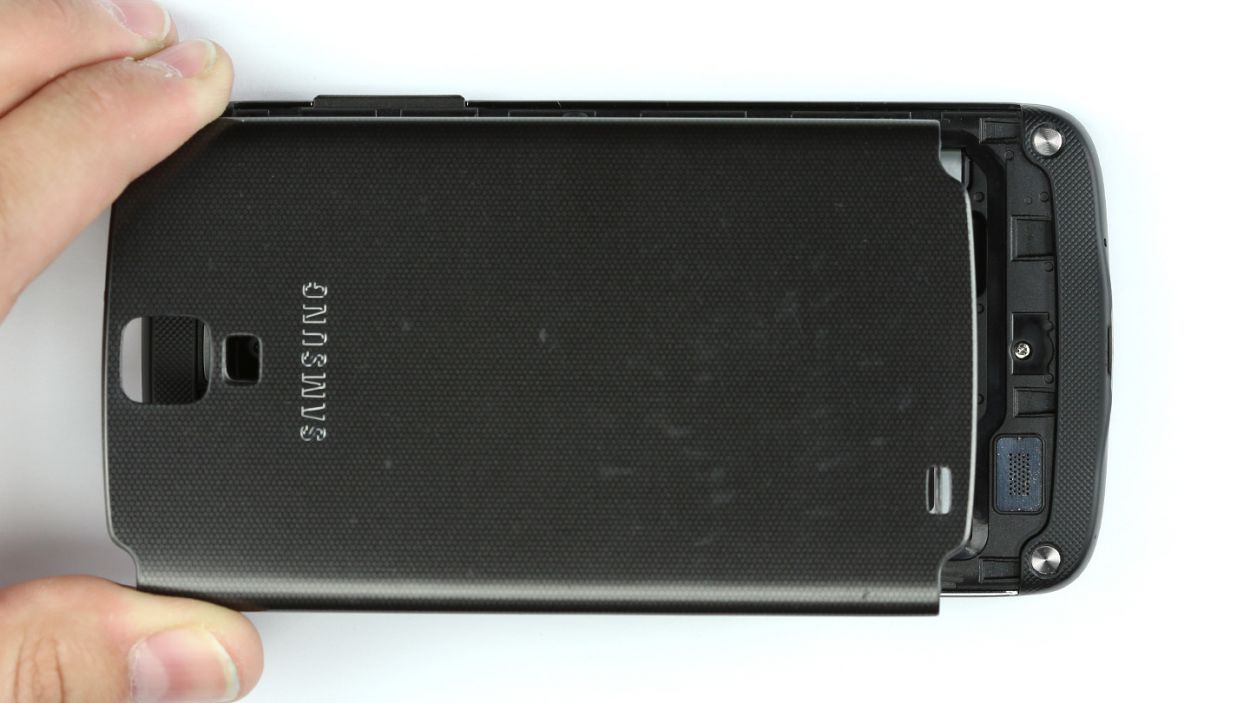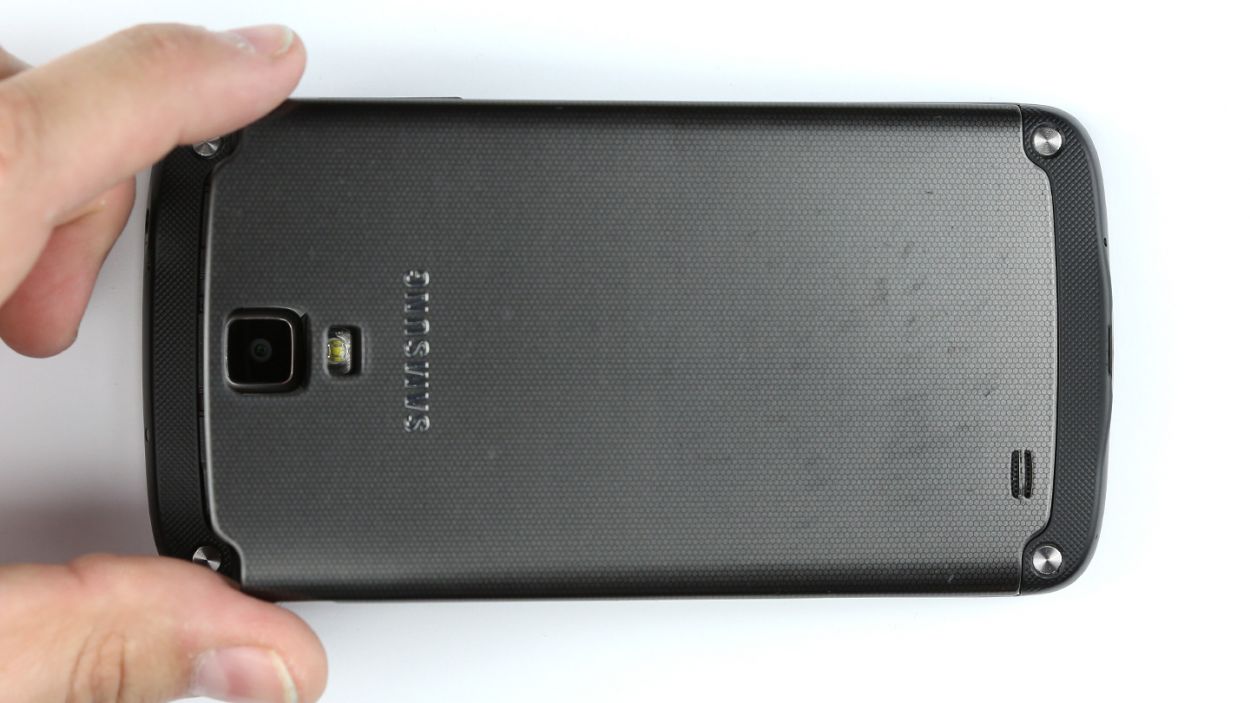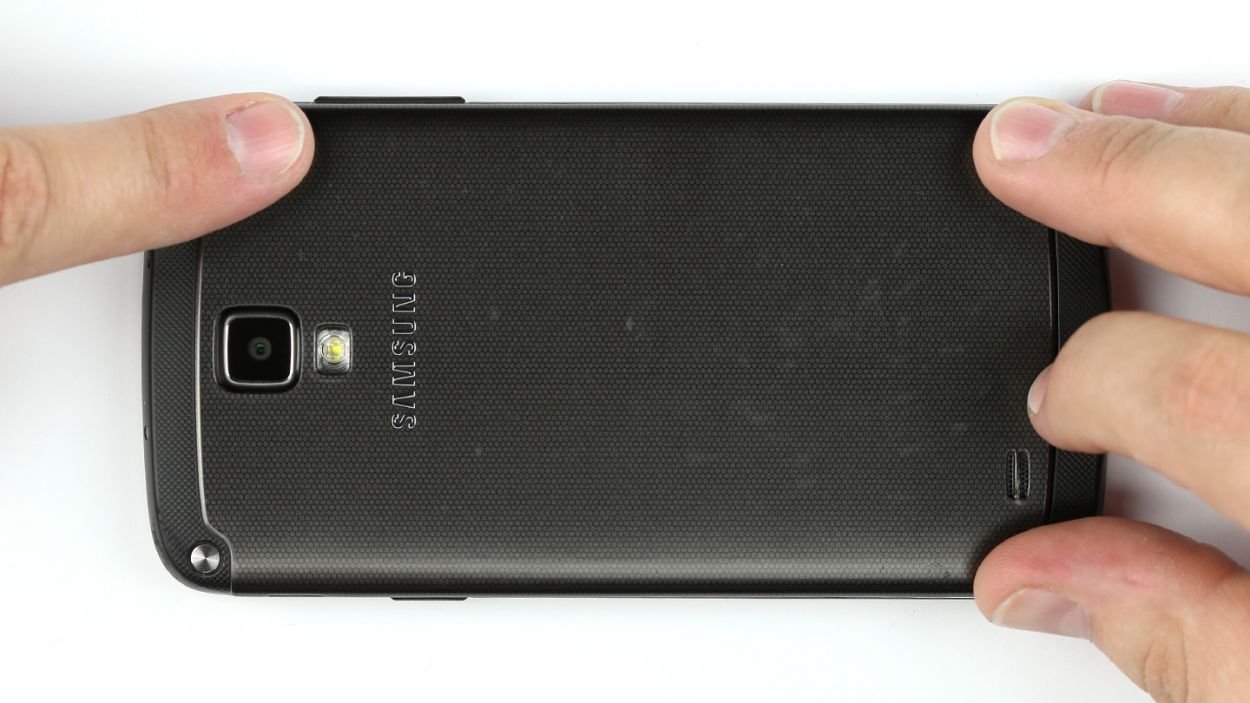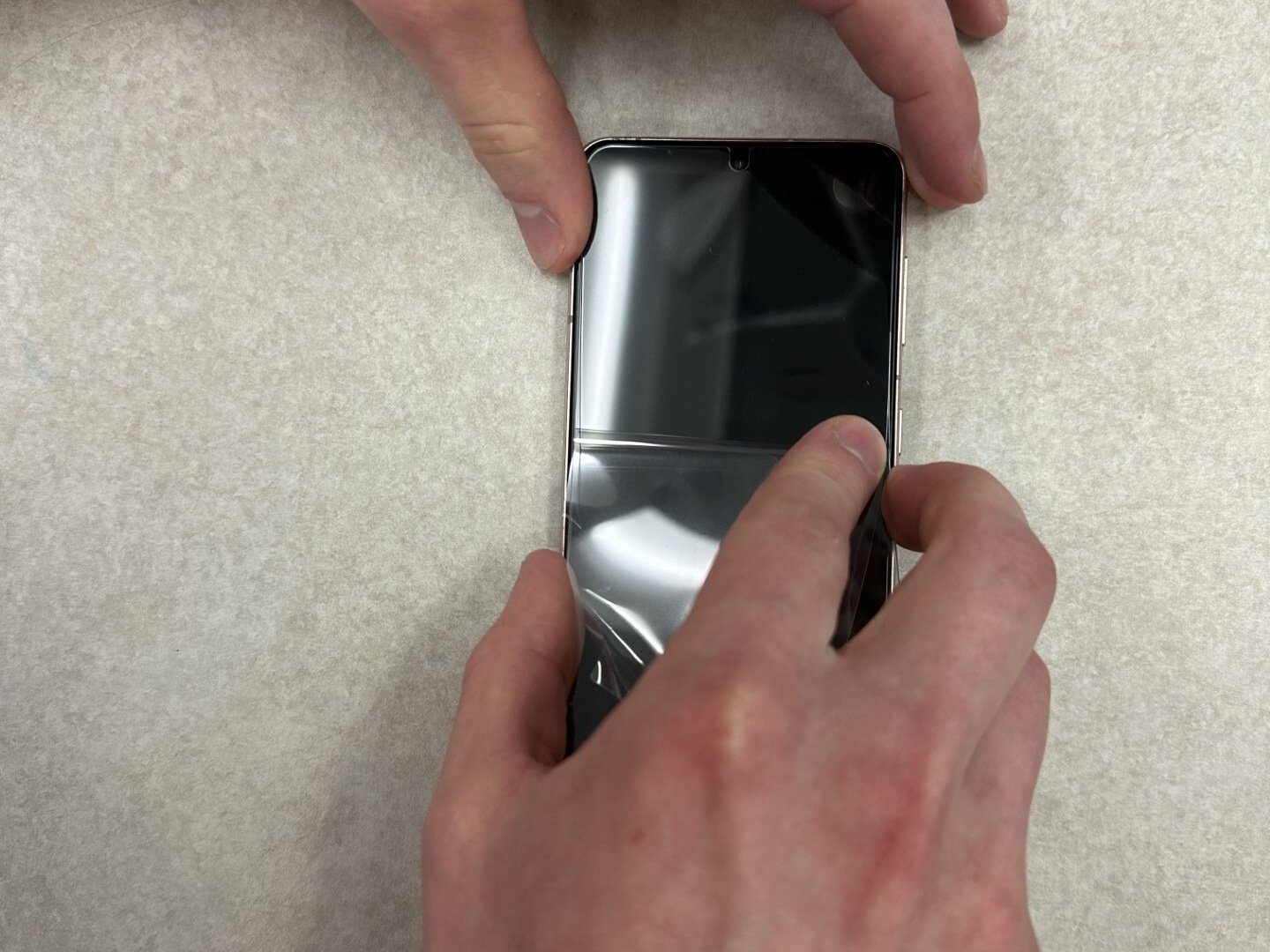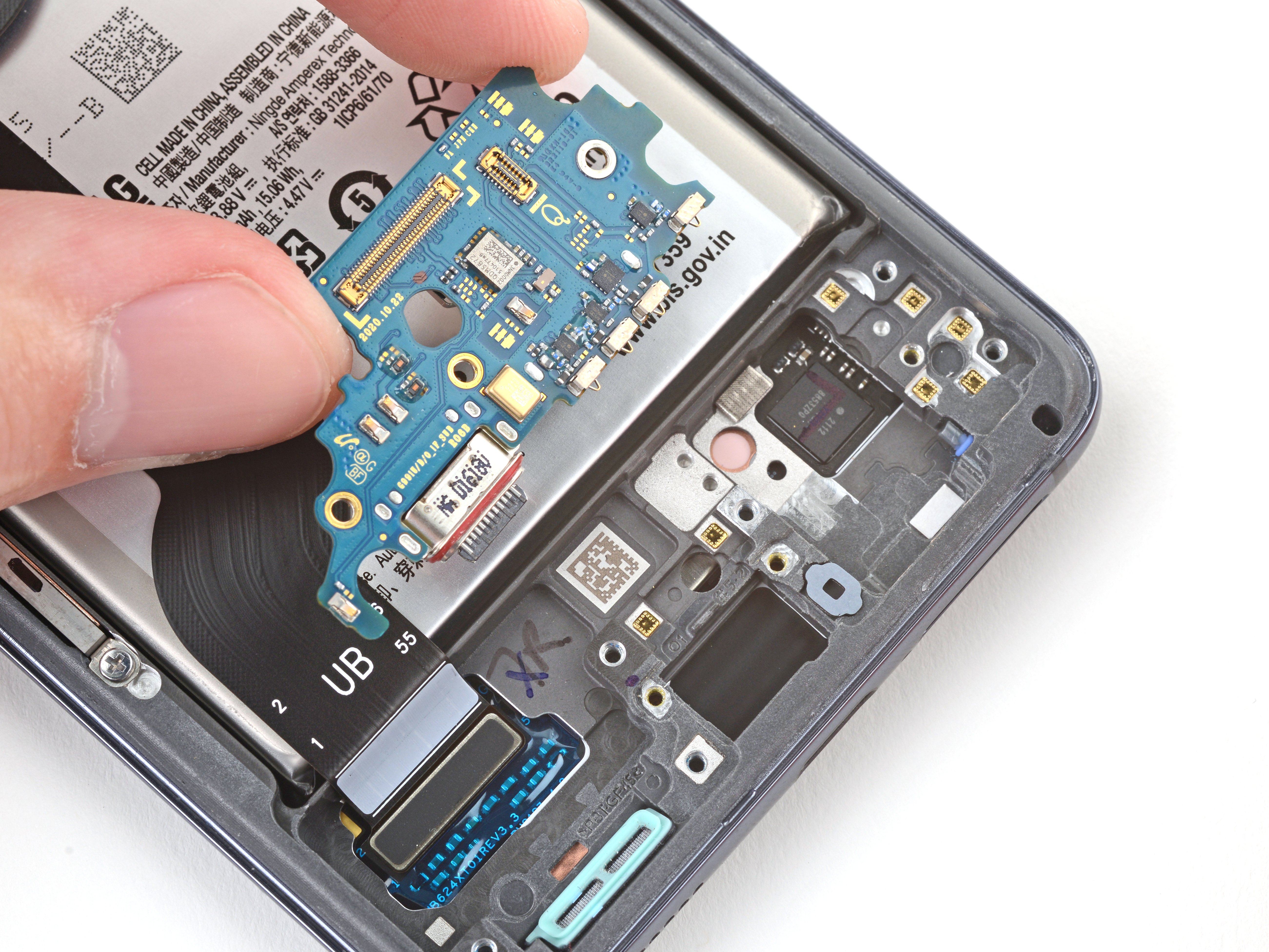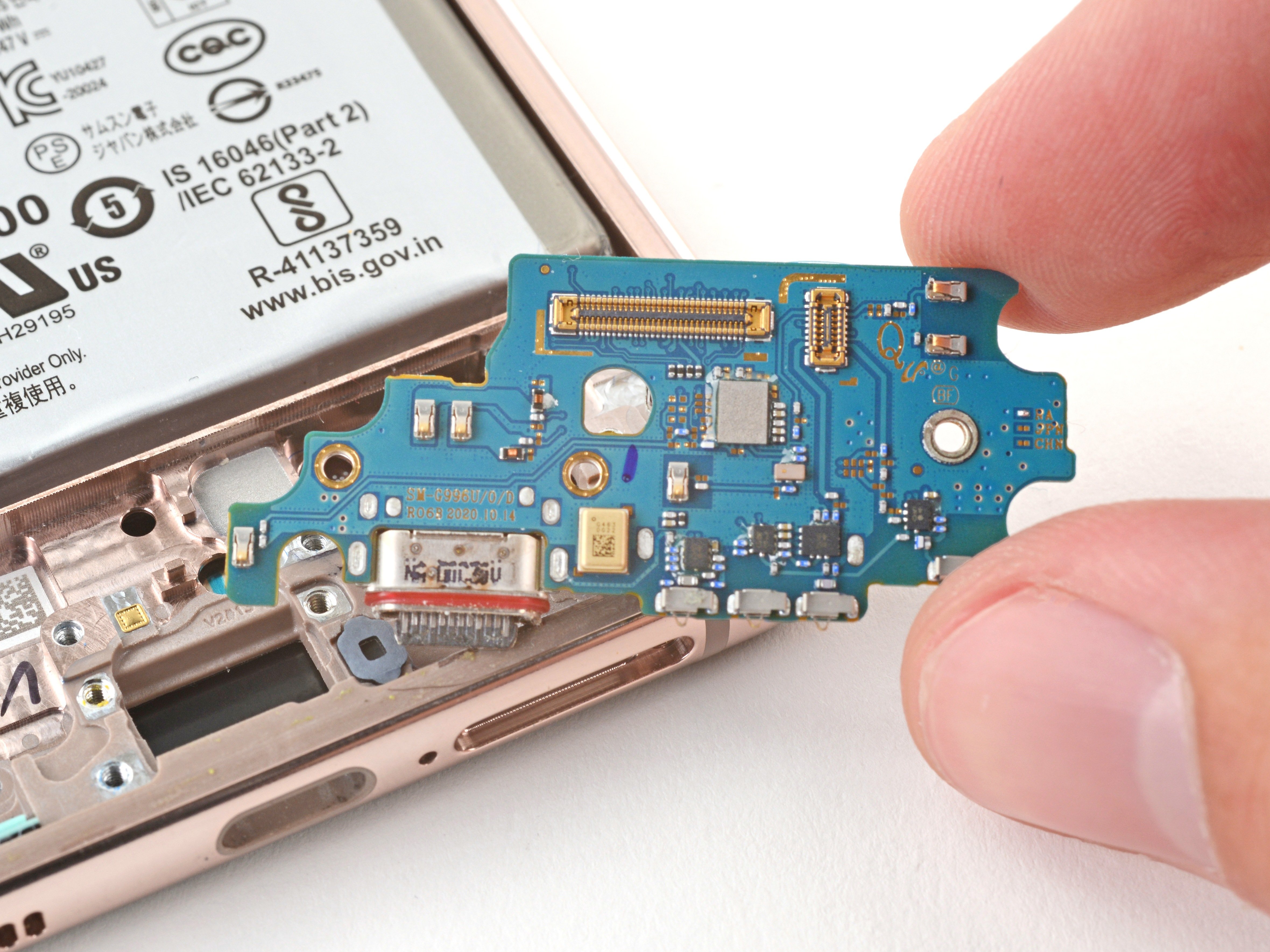DIY Guide to Replace Galaxy S4 Active Front Camera
Duration: 45 min.
Steps: 20 Steps
In this guide, we’ll walk you through the process of swapping out your Galaxy S4 Active’s faulty front camera all by yourself! If your front camera is playing hide and seek, the aperture is stuck, or your selfies are coming out fuzzy, this repair is just what you need. And remember, if you need help, you can always schedule a repair!
Step 1
– Hey there! First up, you’ll notice some tiny clips holding the back cover snugly to the chassis. There’s a little groove right above the power button that’s just waiting for your fingernail or a spudger to give it a gentle lift.
– Now, with a bit of care, disconnect that back cover from the chassis. You’re doing great!
– Finally, go ahead and remove the back cover. You’re one step closer to your repair!
Step 3
– Pop out the SIM card and the microSD card like a pro!
Step 4
– Grab your trusty steel laboratory spatula and gently lift out those four metal shields. Just slide the tip of the spatula under the covers and give them a little nudge to pop them out of their cozy spots in the chassis. You’re doing great!
Step 5
– Remove the twelve Phillips screws that attach the chassis to the display. Put the screws in a container.12 x 3.9 mm Phillips screws
Step 6
– Hey there! The chassis isn’t just hanging out with the display; it’s also got some sneaky little hooks keeping it snug. Grab your trusty steel spatula and let’s get to work detaching that chassis!
– Slide the spatula between the display and the chassis. Starting at the power button is a breeze!
– Now, gently glide that spatula all the way around the device. You’re doing great!
– Once you’ve successfully detached the chassis, go ahead and lift it off the display. Nice job!
Step 7
– Time to unplug the sub-board’s plug contact and give it a little break.
– Next up, gently disconnect the antenna cable. It’s been working hard!
– Now, let’s free the display connection. It deserves some time off too.
– Don’t forget to disconnect the brightness sensor. It’s all about balance!
– Give the proximity sensor a little love by disconnecting it next.
– Finally, let’s unplug the connection for the front camera. Smile, you’re doing great!
Step 8
– The logic board is snugly attached to the rear camera and vibration motor. Gently nudge the logic board towards the USB port to release it.
– With care, lift the logic board up.
– Now, go ahead and take the logic board out of the enclosure.
Step 9
– Time to get started! Remove that Phillips screw to free the cover plate, which is holding the speaker, proximity sensor, and front camera in place. You’ll need 1 x 3.0 mm Phillips screw.
– Next up, gently remove the cover from the enclosure. You got this!
Step 10
– Take out the front camera with care!
Step 11
– Carefully place the new front camera into its cozy spot in the enclosure.
Step 12
– Gently place the cover plate into the enclosure, making sure it fits snugly.
– Secure the cover using the Phillips screw. This trusty cover plate keeps the speaker, proximity sensor, and front camera safe and sound. Just one 3.0 mm Phillips screw is all you need!
Step 13
– Gently place the logic board into the enclosure, making sure it fits snugly.
– Keep an eye out for any plug connections trying to sneak under the logic board—let’s not let them get stuck!
– The logic board is connected to the rear camera and the vibration motor. Give it a little nudge towards the top of the enclosure until you hear that satisfying click!
Step 14
– First up, let’s connect that front camera to the logic board—it’s like giving it a warm hug!
– Next, link the logic board to the proximity sensor. They need to be best buddies!
– Now, it’s time to connect the brightness sensor. We want to keep things bright and cheery!
– Don’t forget to connect the display—this is where the magic happens!
– Now, let’s hook the logic board up to the antenna cable. It’s all about staying connected!
– Finally, connect the sub-board. We’re almost there—just a few more steps to go!
Step 15
Step 16
– Secure the chassis in place using the twelve Phillips screws. You’ll need 12 screws that are 3.9 mm Phillips.
Step 17
– Grab those tweezers and gently place the four metal shields back in their cozy spots.
– Give each cover a nice, firm press to make sure they’re snug as a bug!
Step 18
– Pop in the SIM card and the microSD card like a pro! You’re one step closer to getting your device back in action.
Step 19
– Slide that battery right into your Galaxy S4 Active like a pro!
Step 20
– Gently place the back cover onto the chassis.
– Make sure the back cover latches onto the bottom of the chassis.
– Give the back cover a gentle press all around so the retaining clips can snap into place.
